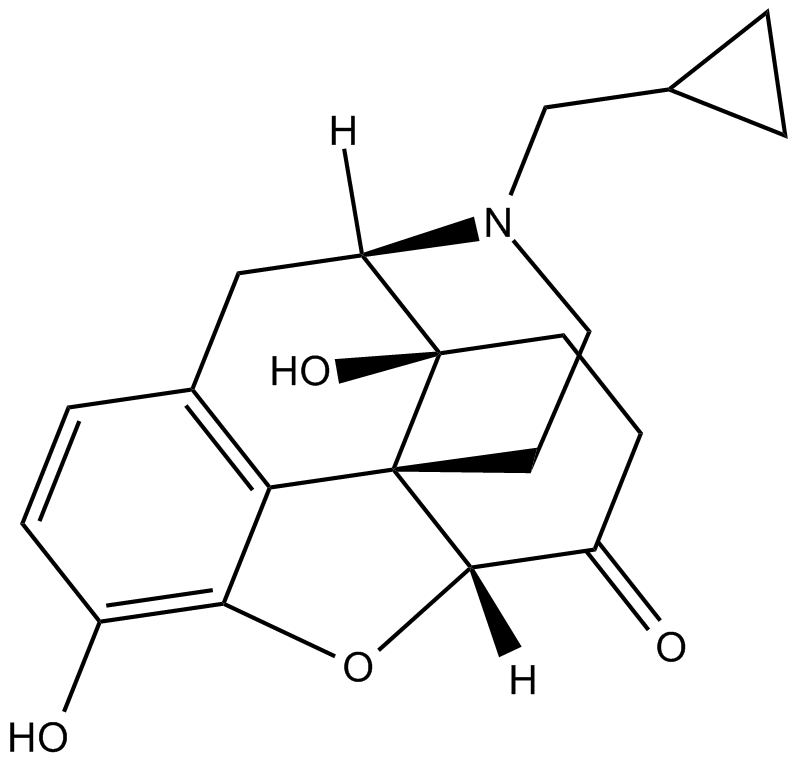Opioid Receptor
Opioid receptor is a group of G protein-coupled receptors with opioids as ligands.
Products for Opioid Receptor
- Cat.No. Product Name Information
-
GC60391
β-Casomorphin, bovine TFA

-
GC61484
β-Casomorphin, human TFA
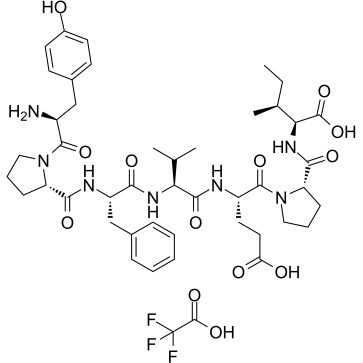
-
GC38005
β-Endorphin, equine
β-Endorphin, equine is an endogenous opioid peptide, which binds at high affinity to both μ/δ opioid receptors.

-
GC38030
β-Endorphin, equine (TFA)
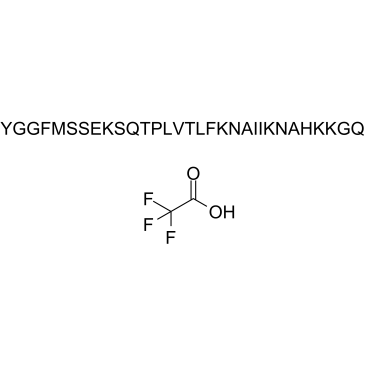
-
GC33736
β-Casomorphin, bovine (β-Casomorphin-7 (bovine))
β-Casomorphin, bovine (β-Casomorphin-7 (bovine)) (β-Casomorphin-7 (bovine) ) is a opioid peptide with an IC50 of 14 μM in an Opioid receptors binding assay.
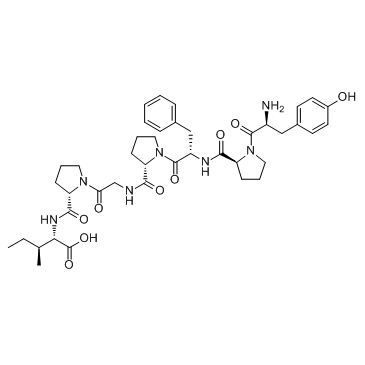
-
GC33784
β-Casomorphin, human (Human β-casomorphin 7)
is an opioid peptide, acts as an agonist of opioid receptor.
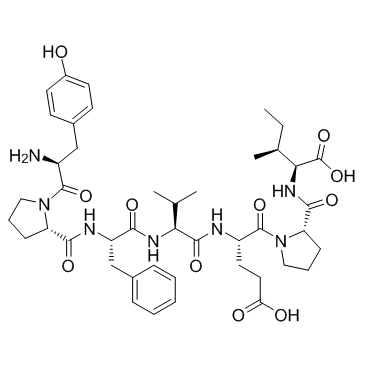
-
GC31117
β-Endorphin, human
β-Endorphin, human, a prominent endogenous peptide, existing in the hypophysis cerebri and hypothalamus, is an agonist of opioid receptor, with preferred affinity for μ-opioid receptor and δ-opioid receptor; β-Endorphin, human exhibits antinociception activity.

-
GC15938
β-Funaltrexamine hydrochloride
μ opioid receptor antagonist
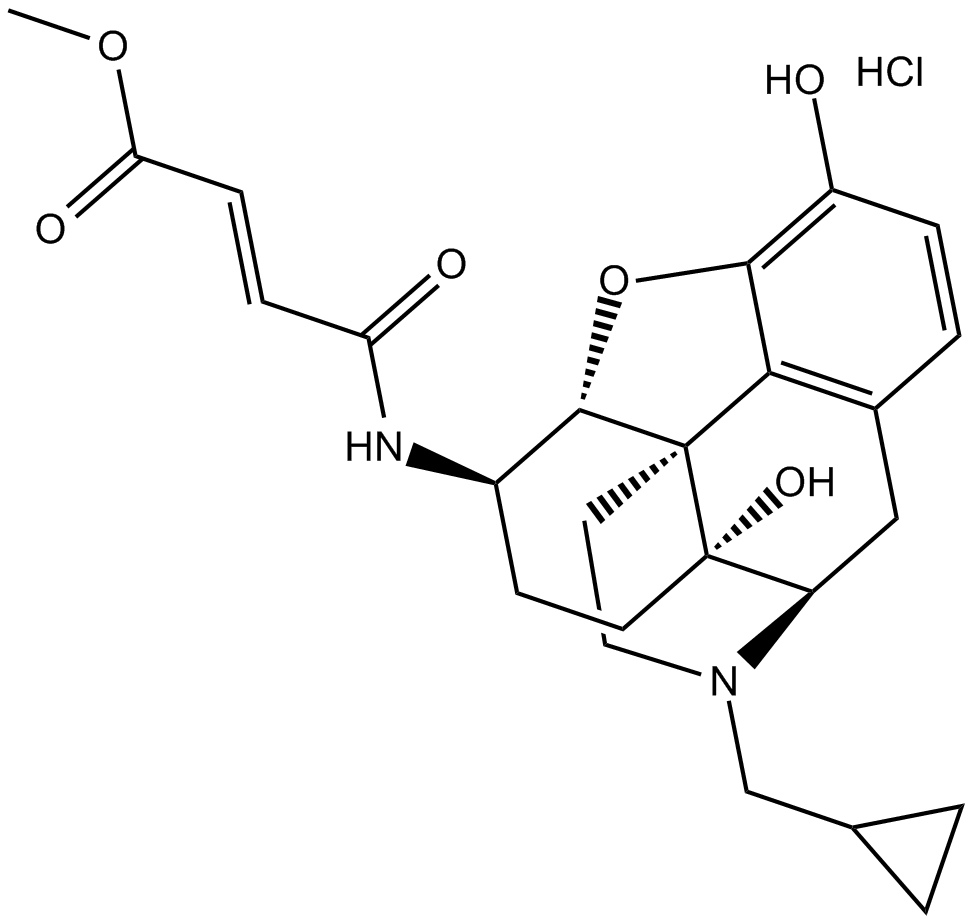
-
GC64007
(±)-U-50488 hydrate hydrochloride
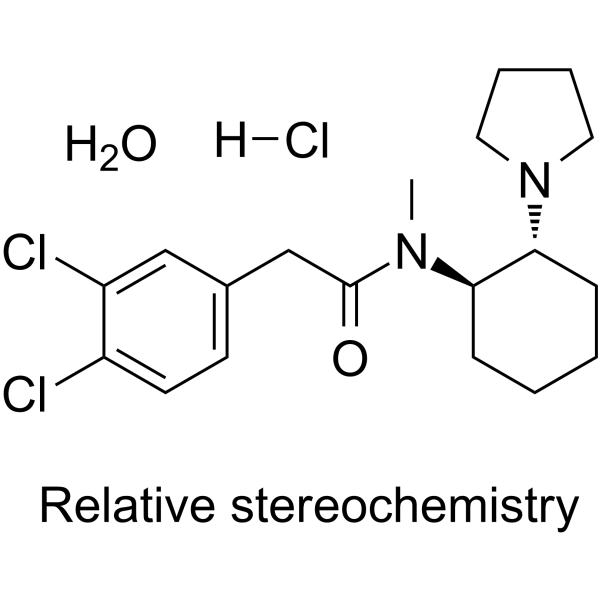
-
GC15885
(±)-U-50488 hydrochloride
κ-opioid receptor agonist, selective
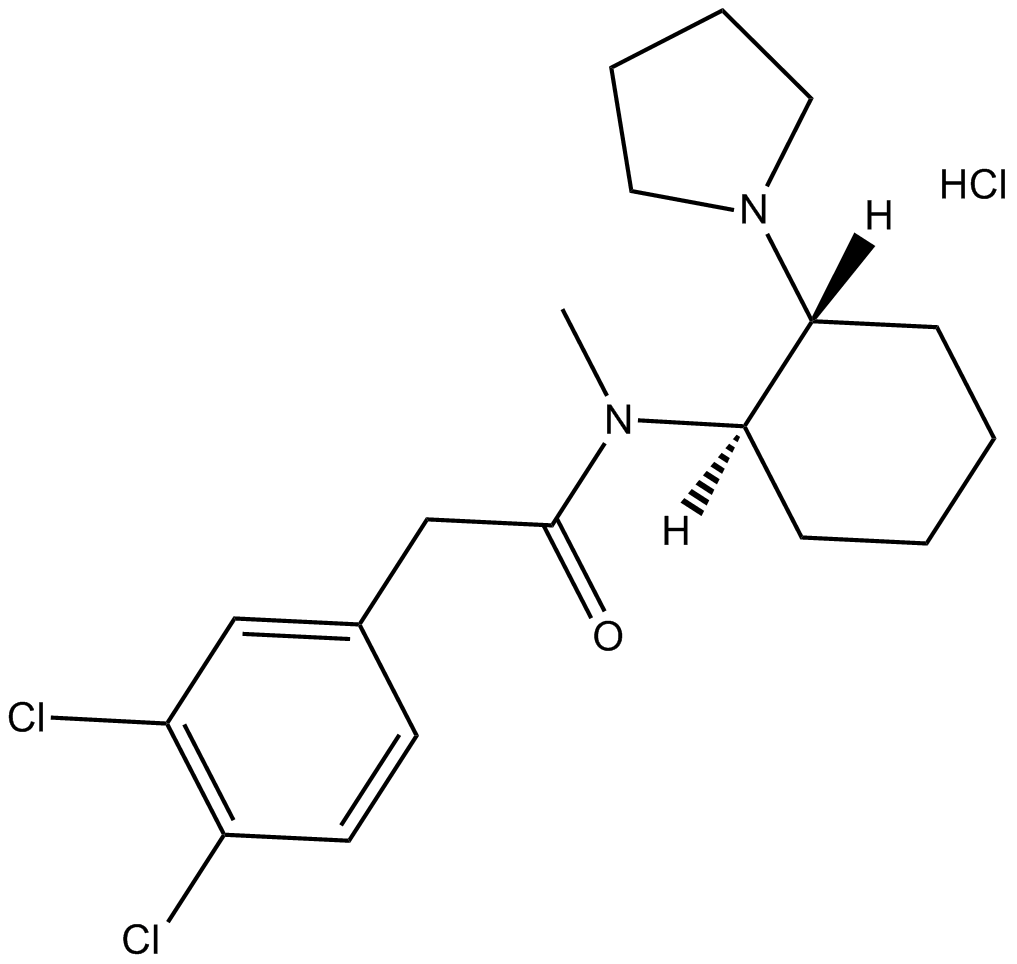
-
GC12688
(+)-U-50488 hydrochloride
Selective κ-opioid agonist
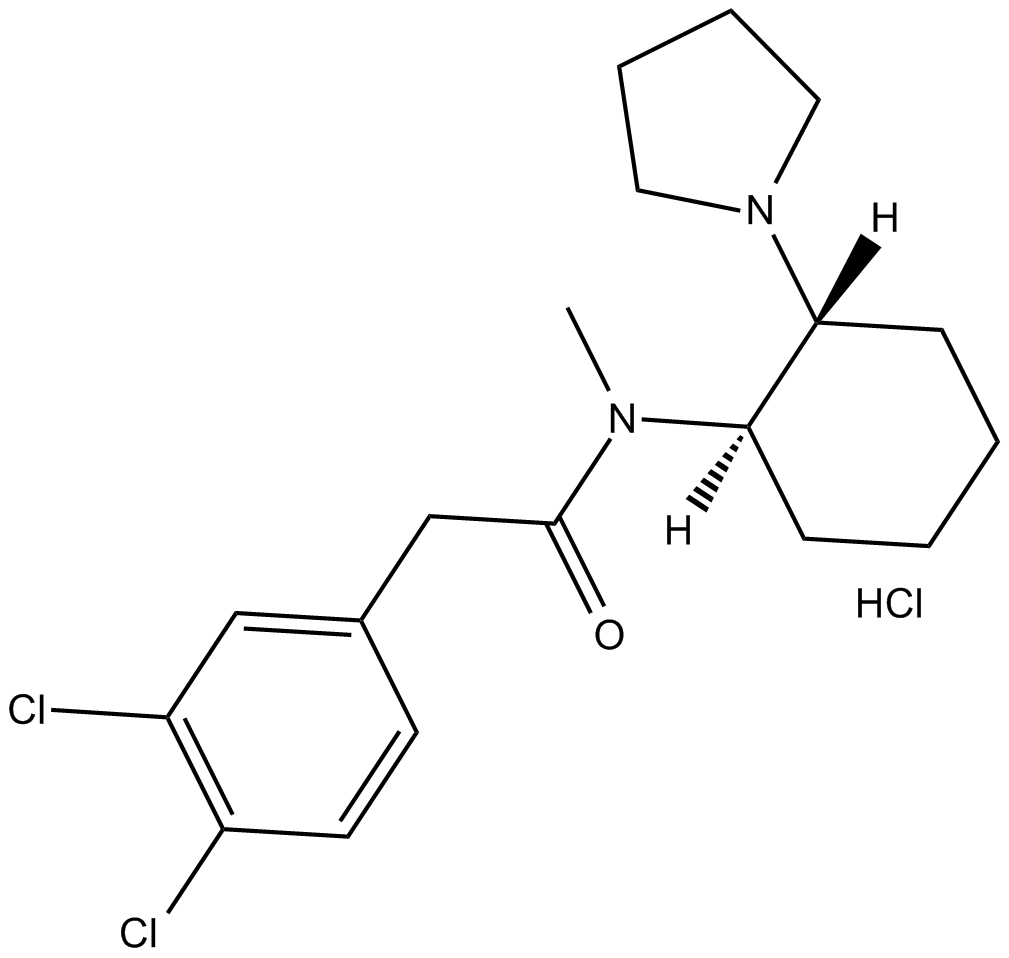
-
GC15944
(-)-U-50488 hydrochloride
κ-opioid receptor agonist, selective
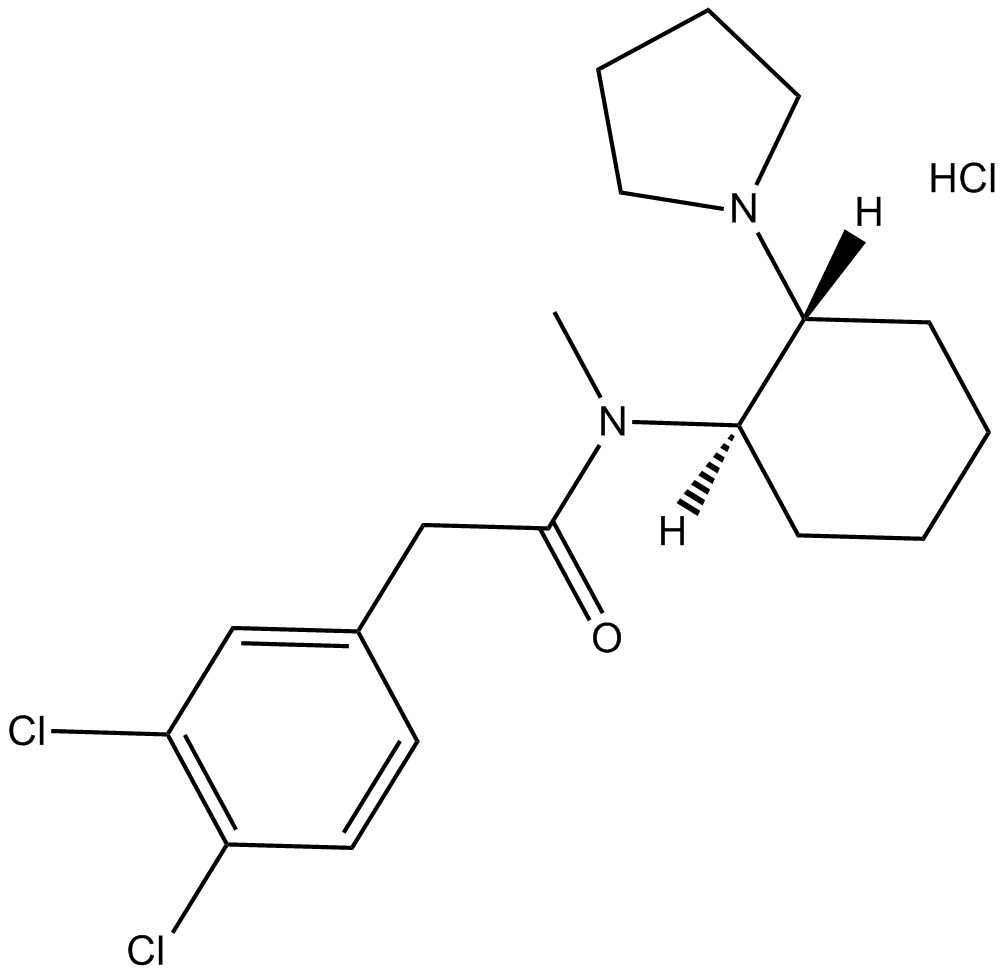
-
GC70081
(1R,2R)-U-50488 hydrochloride
(1R,2R)-U-50488 hydrochloride is the absolute configuration of (±)-U-50488 hydrochloride. (±)-U-50488 hydrochloride is a κ opioid receptor agonist.
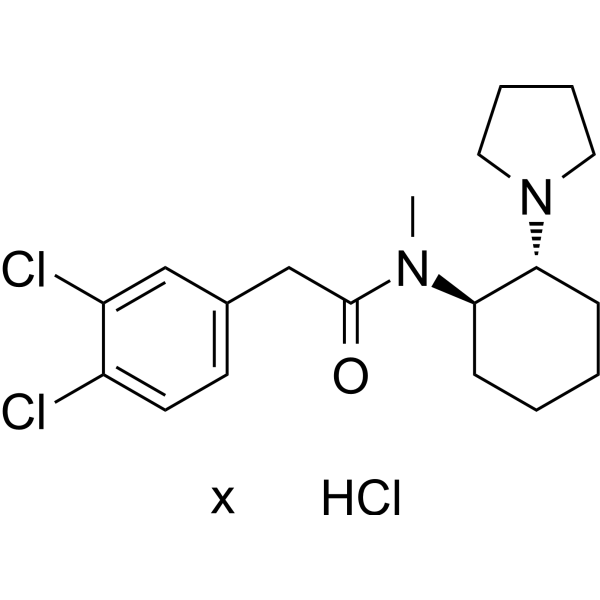
-
GC69798
(Rac)-SNC80
(Rac)-SNC80 is the racemic form of SNC80. SNC80 (NIH 10815) is an effective and highly selective non-peptide delta-opioid receptor agonist with a Ki of 1.78 nM and IC50 of 2.73 nM. SNC80 has anti-nociceptive, anti-hyperalgesic, and antidepressant-like effects, and can be used in research on various types of headaches.
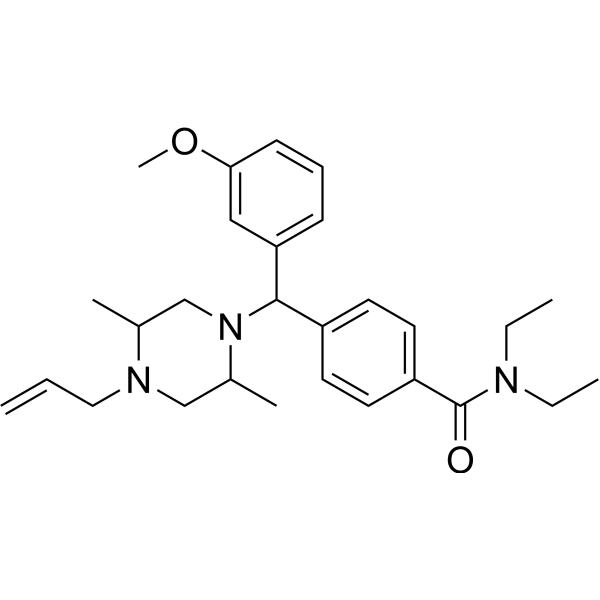
-
GC66679
2,6-Dimethyl-L-tyrosine
2,6-Dimethyl-L-tyrosine (Dmt) is a tyrosine derivative that enhances receptor affinity, functional bioactivity and in vivo analgesia of opioid peptides.
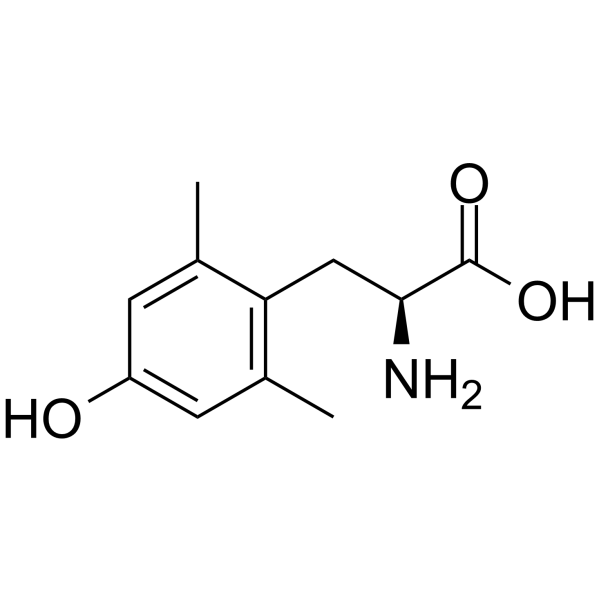
-
GC64147
Acetyl tetrapeptide-15
Acetyl tetrapeptide-15 is a synthetic peptide used in the cosmetics for sensitive skin.
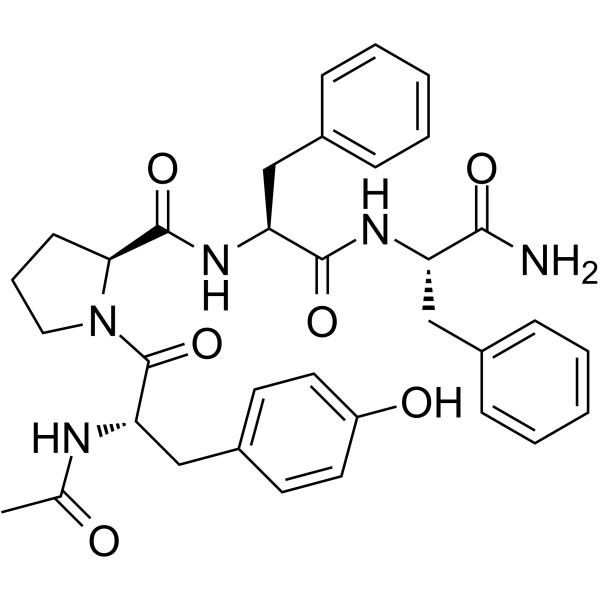
-
GC11829
ADL5859 HCl
ADL5859 HCl (compound 20) is a selective and orally active δ opioid receptor (DOR) agonist with an Ki and an EC50 value of 0.84 and 20 nM, respectively.
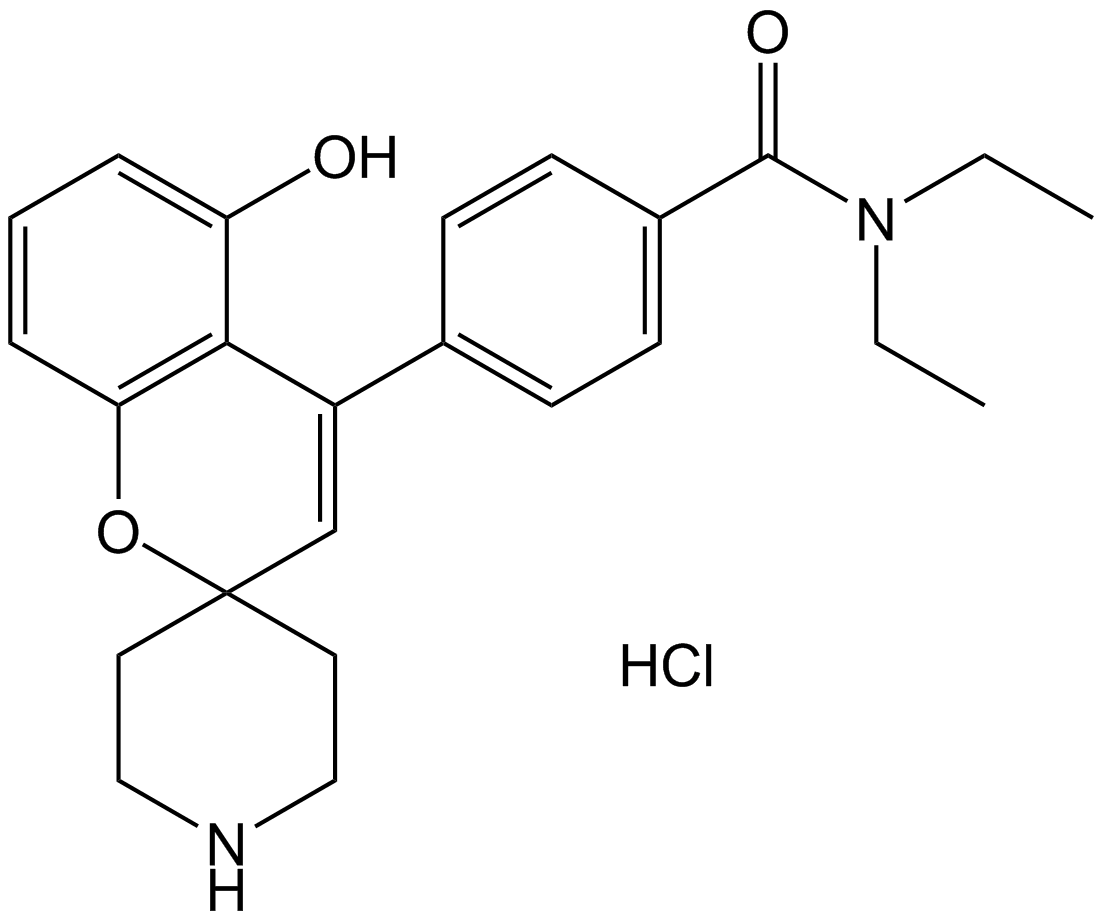
-
GP10109
Adrenorphin

-
GC17623
Alvimopan
A μ-opioid receptor antagonist

-
GC12619
Alvimopan dihydrate
A μ-opioid receptor antagonist
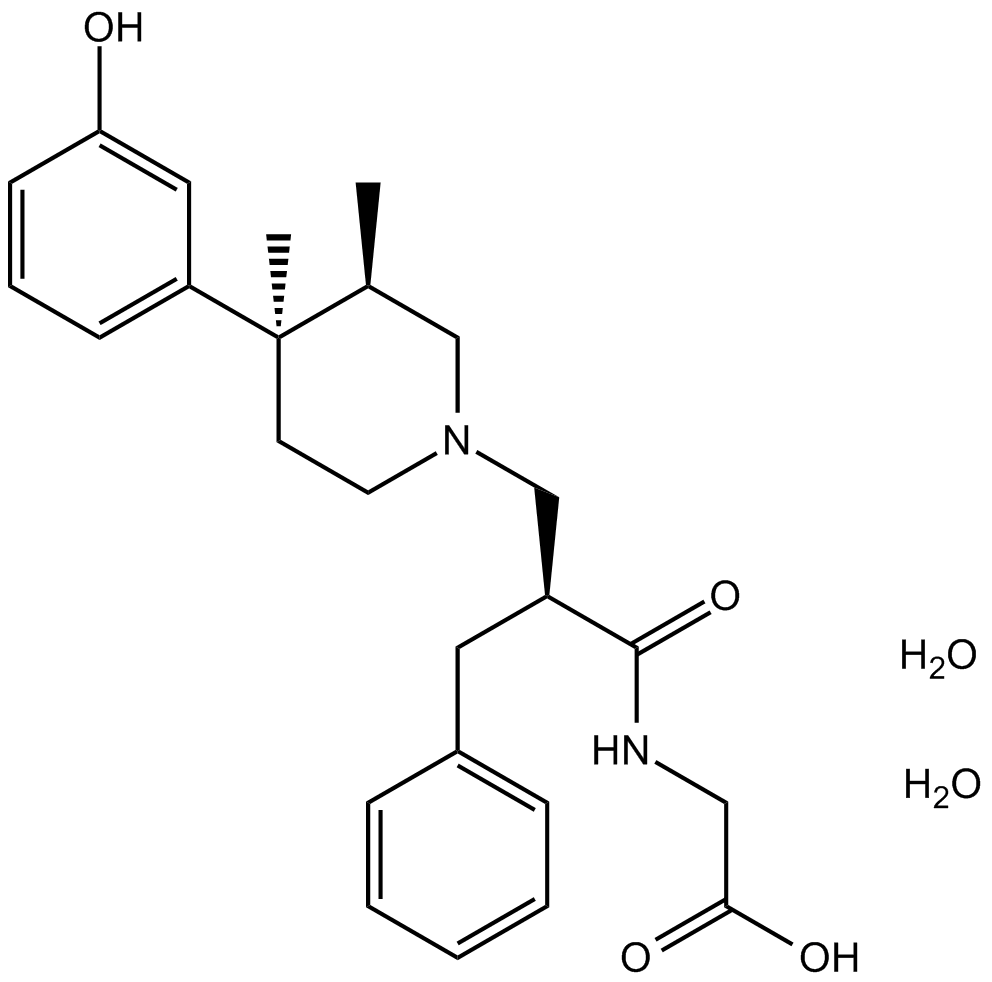
-
GC35311
Alvimopan monohydrate
Alvimopan monohydrate (ADL 8-2698 monohydrate) is a potent, selective, orally active and reversible μ-opioid receptor antagonist, with an IC50 of 1.7 nM.

-
GC12219
AR-M 1000390 hydrochloride
Delta-opioid receptor agonist,low-internalizing
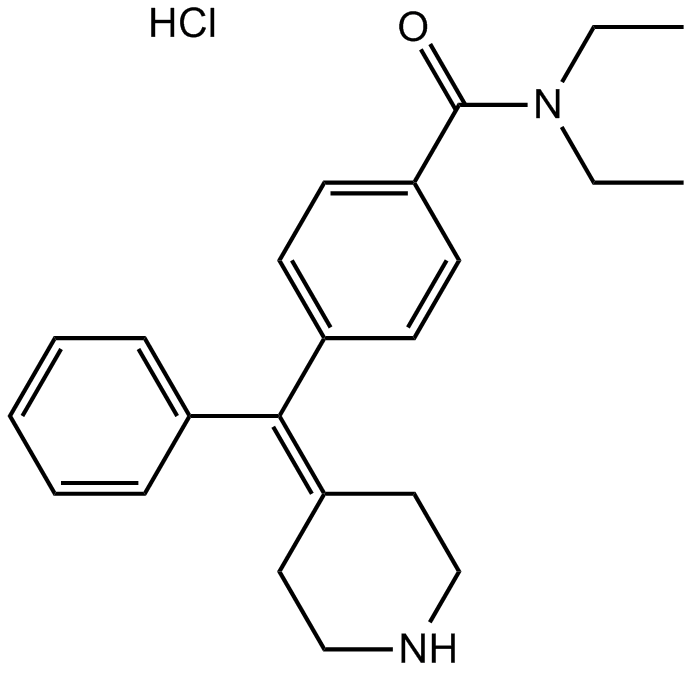
-
GC31762
Asimadoline (EMD-61753)
Asimadoline (EMD-61753) (EMD-61753) is an orally active, selective and peripherally active κ-opioid agonist with IC50s of 5.6 nM (guinea pig) and 1.2 nM (human recombinant).

-
GC61397
Asimadoline hydrochloride
Asimadoline (EMD-61753) hydrochloride is an orally active, selective and peripherally active κ-opioid agonist with IC50s of 5.6 nM (guinea pig) and 1.2 nM (human recombinant).
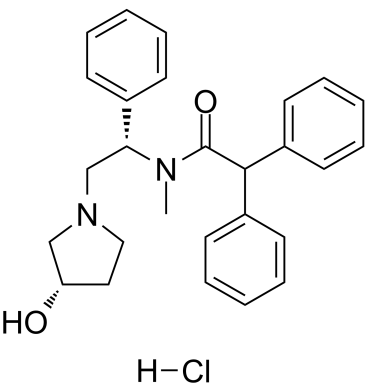
-
GC11390
BAM 22P
Potent endogenous agonist peptide for the newly identified sensory neuron specific receptor (SNSR);
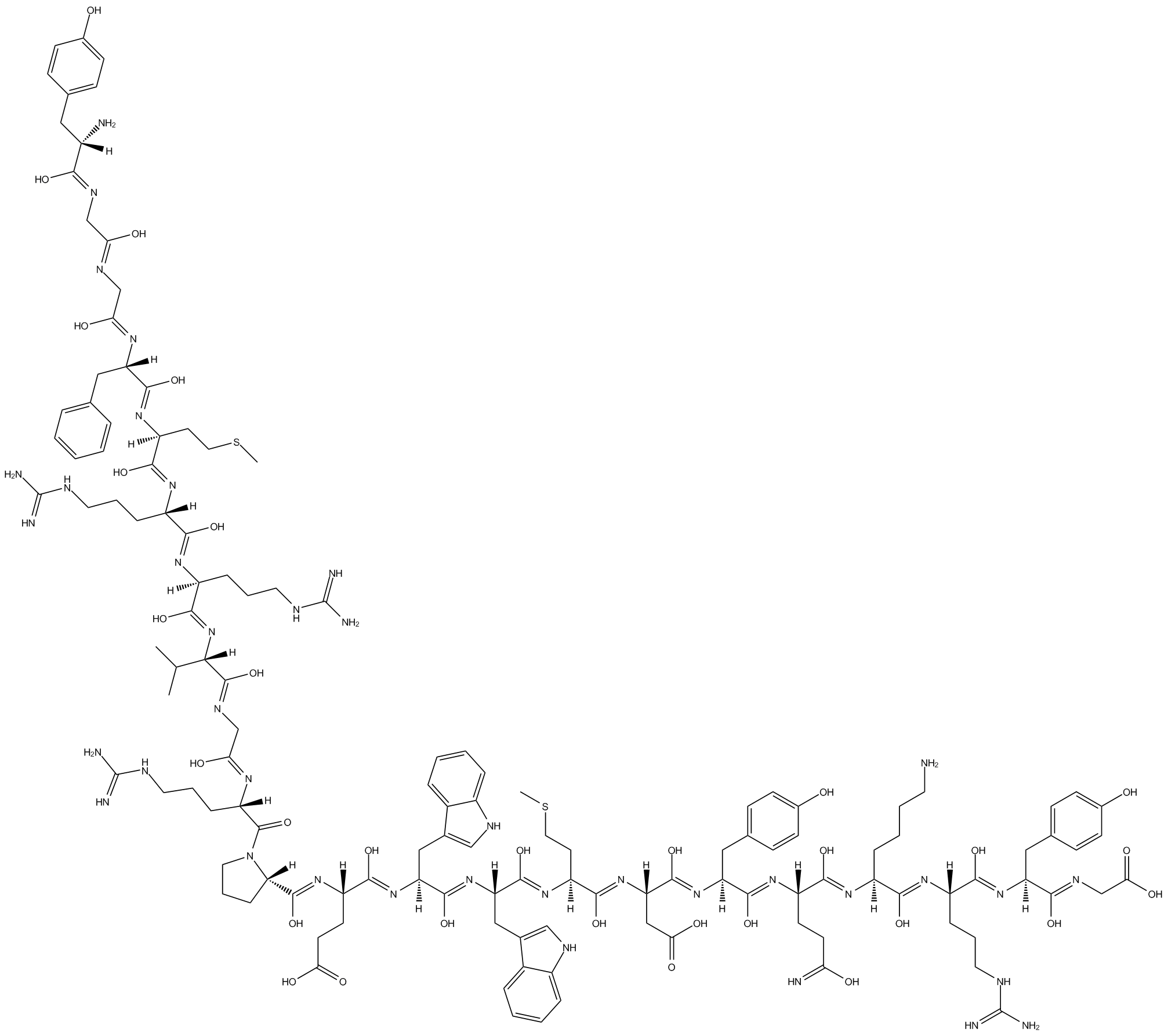
-
GC15926
BAN ORL 24
A nociceptin receptor antagonist
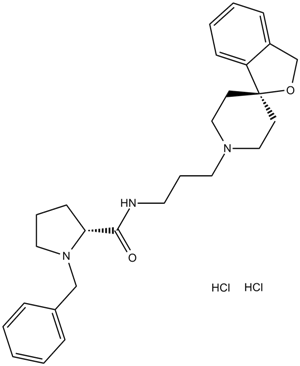
-
GC30639
Bevenopran (CB-5945)
Bevenopran (CB-5945) is a peripheral μ-opioid receptor antagonist.
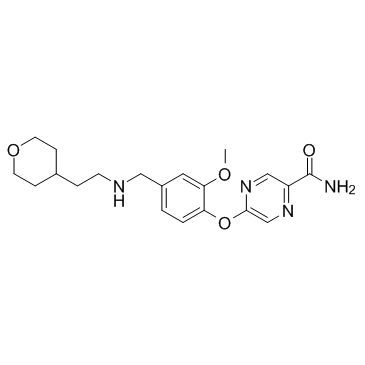
-
GC38741
BPR1M97
BPR1M97 is a dual-acting mu opioid receptor (MOP) and nociceptin-orphanin FQ peptide (NOP) receptor agonist with Ki values of 1.8 and 4.2 nM, respectively.

-
GC15313
BRL 52537 hydrochloride
κ/μ opioid receptor agonist,potent and selective
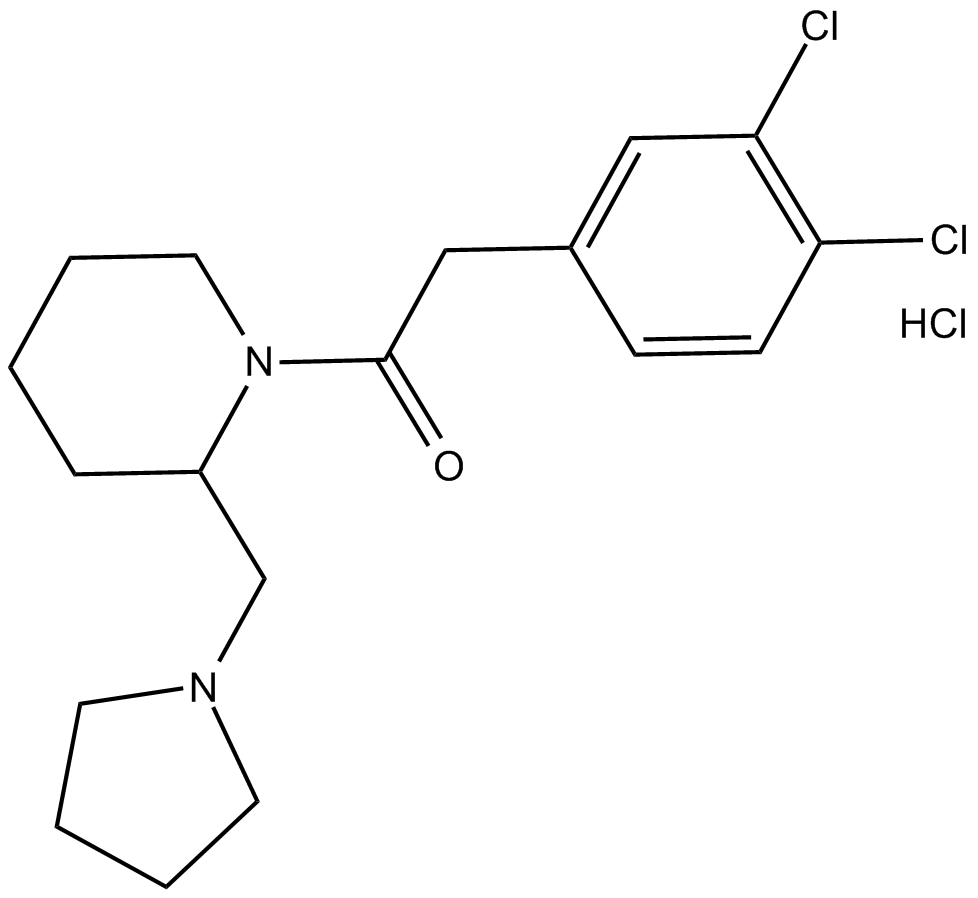
-
GC16521
BW 373U86
Non-peptide delta agonist,potent and selective
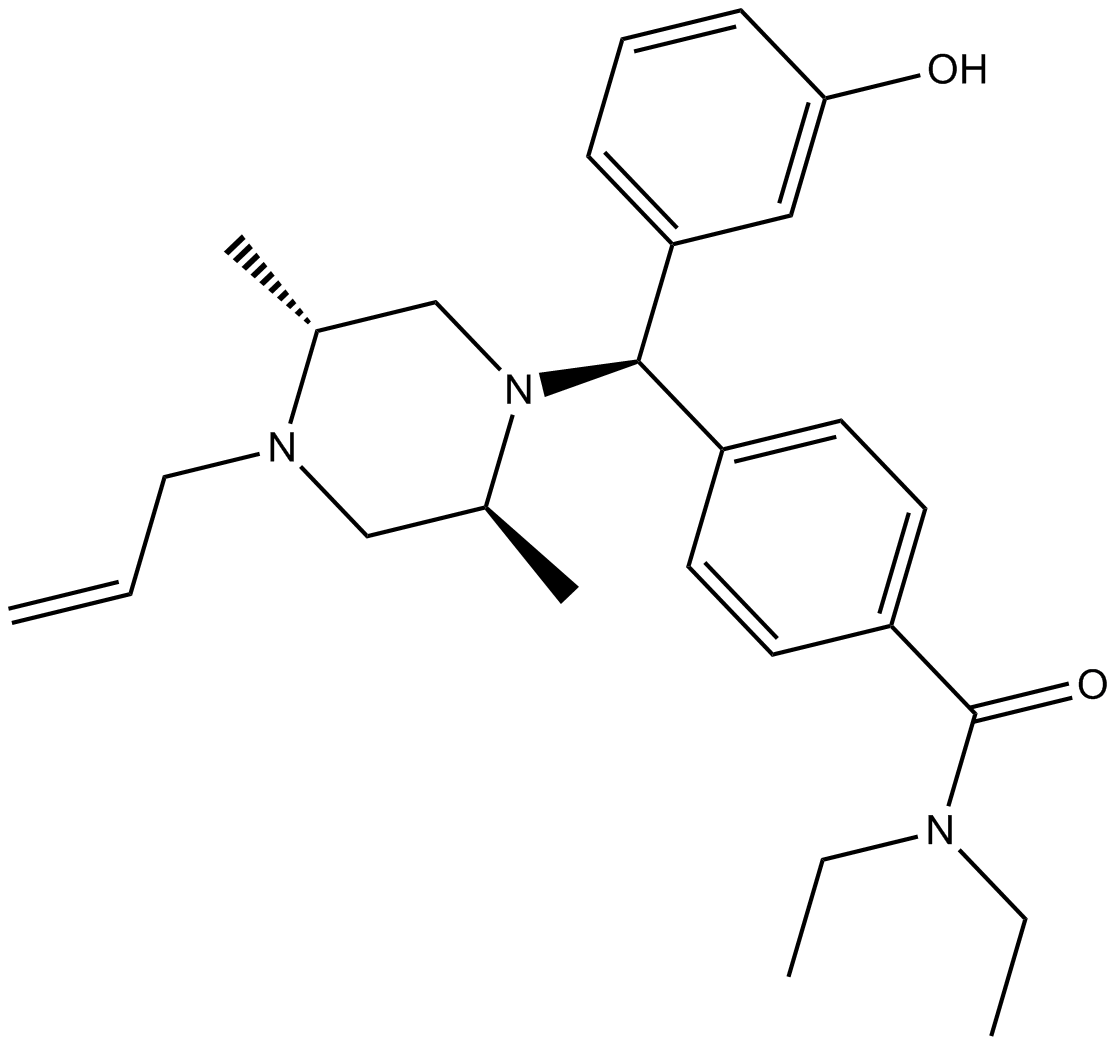
-
GC67907
CCG258747

-
GC35637
Cebranopadol
An analgesic NOP and opioid receptor agonist
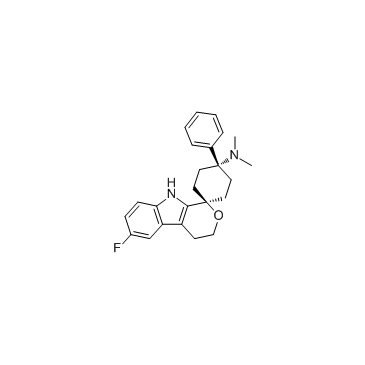
-
GC35638
Cebranopadol ((1α,4α)stereoisomer)
Cebranopadol ((1α,4α)stereoisomer) is a stereoisomer of cebranopadol.
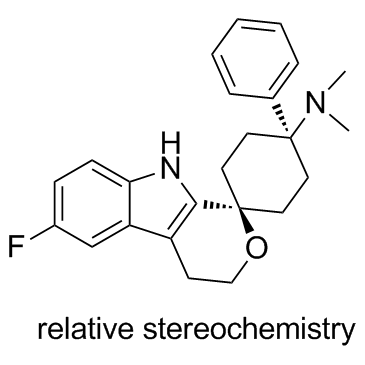
-
GC19229
CERC-501
CERC-501 (CERC-501) is a potent and centrally-penetrant kappa opioid receptor antagonist with a Ki of 0.807 nM.
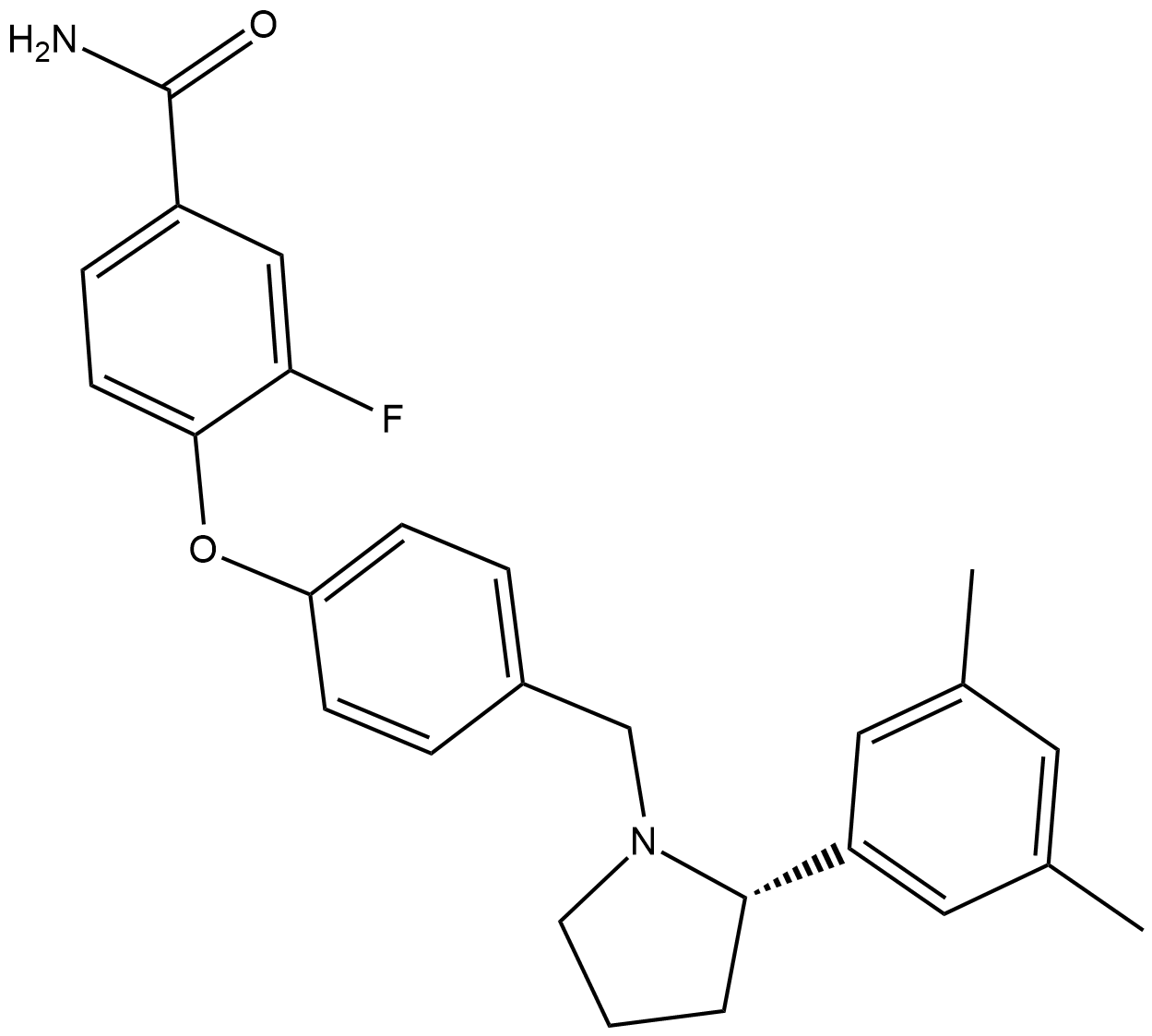
-
GC11535
CTAP
Potent and selective μ opioid receptor antagonist
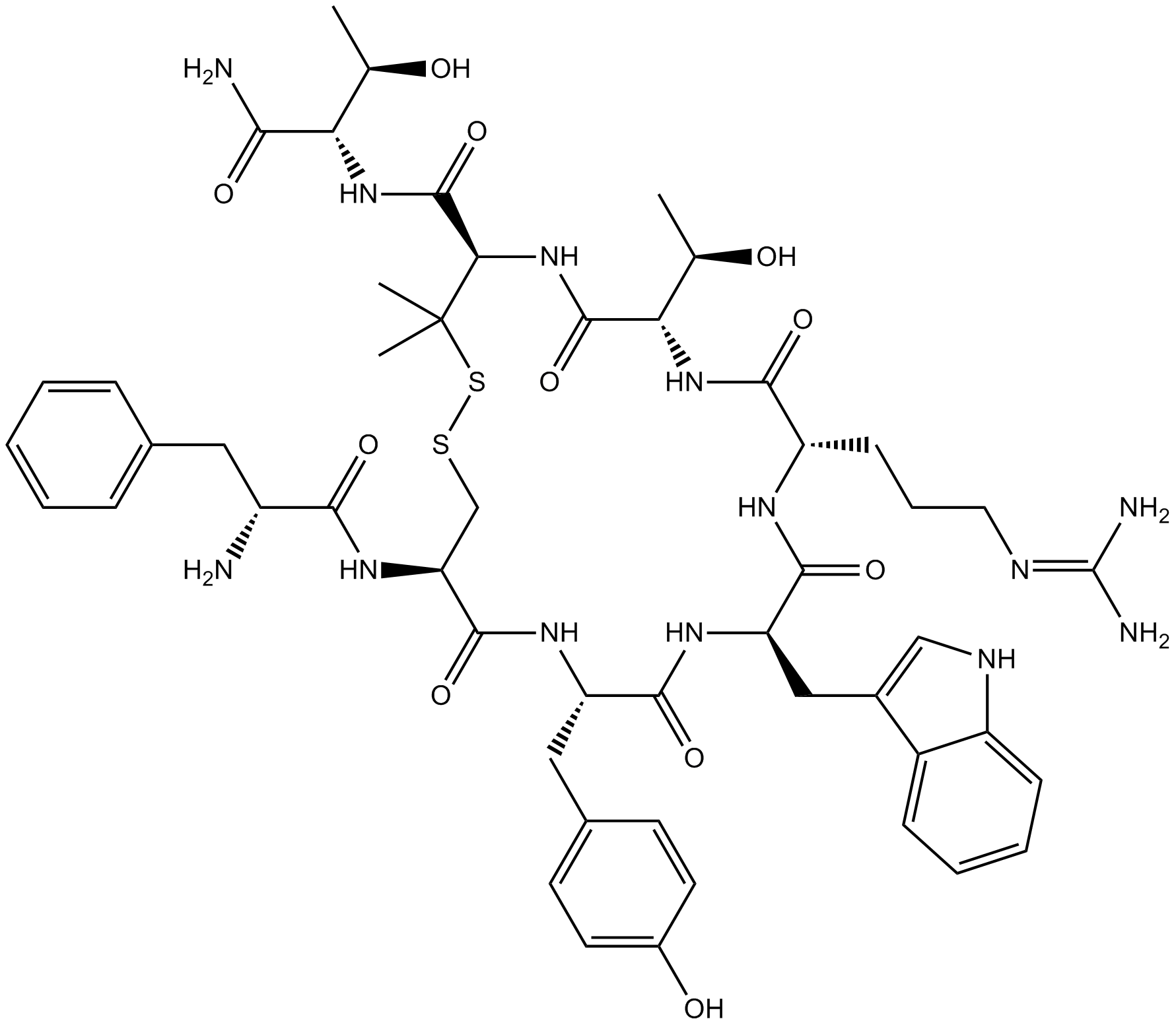
-
GC60730
CTAP TFA
CTAP TFA is a potent, highly selective, and BBB penetrant μ opioid receptor antagonist, with an IC50 of 3.5 nM.
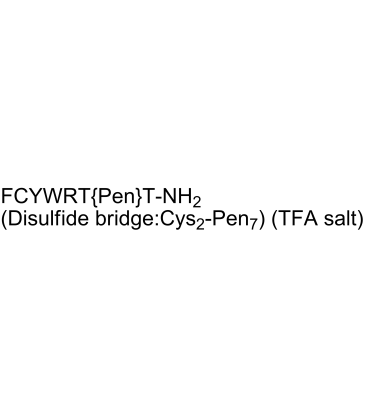
-
GC16888
CTOP
Potent and selective μ opioid receptor antagonist
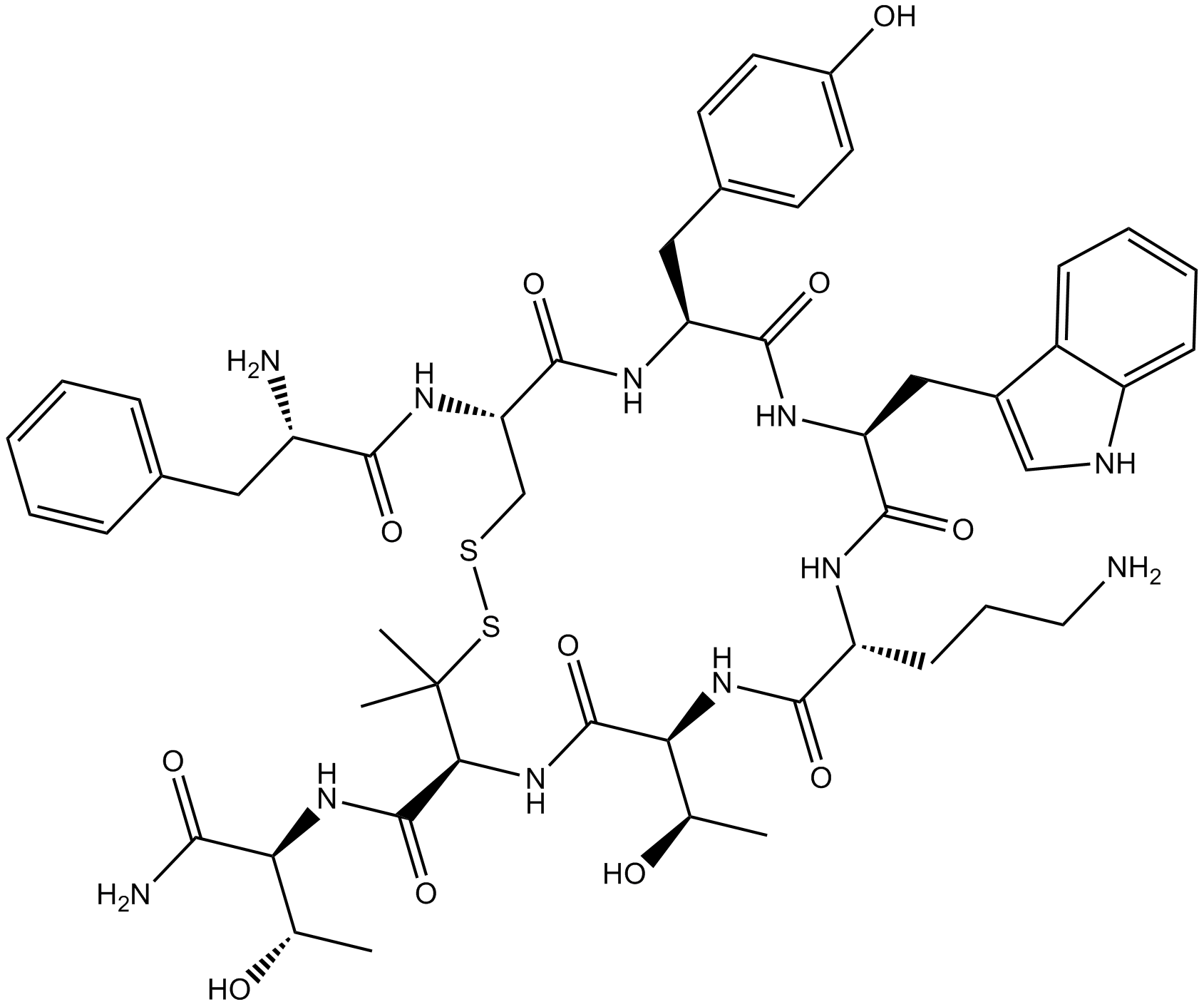
-
GC60731
CTOP TFA
CTOP TFA is a potent and highly selective μ-opioid receptor antagonist.
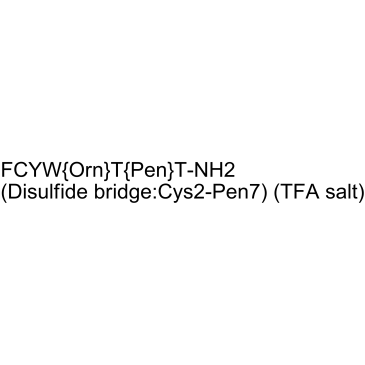
-
GC13189
Cyprodime hydrochloride
μ-opioid receptor antagonist
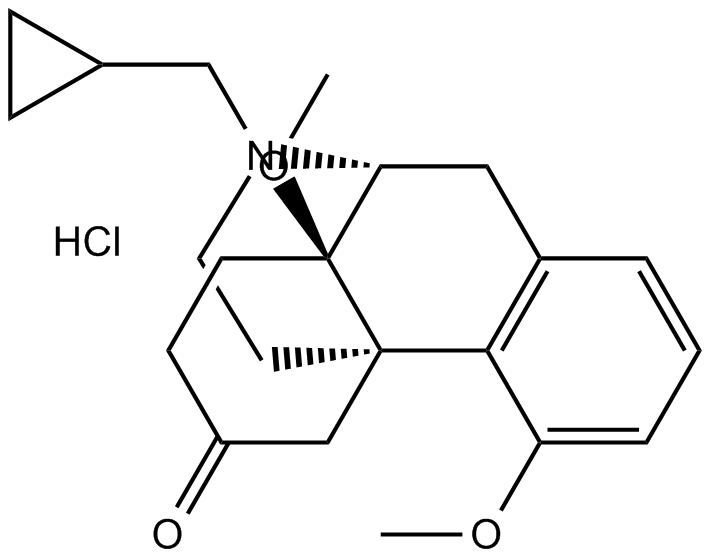
-
GC17677
DADLE
δ-opioid receptor agonist
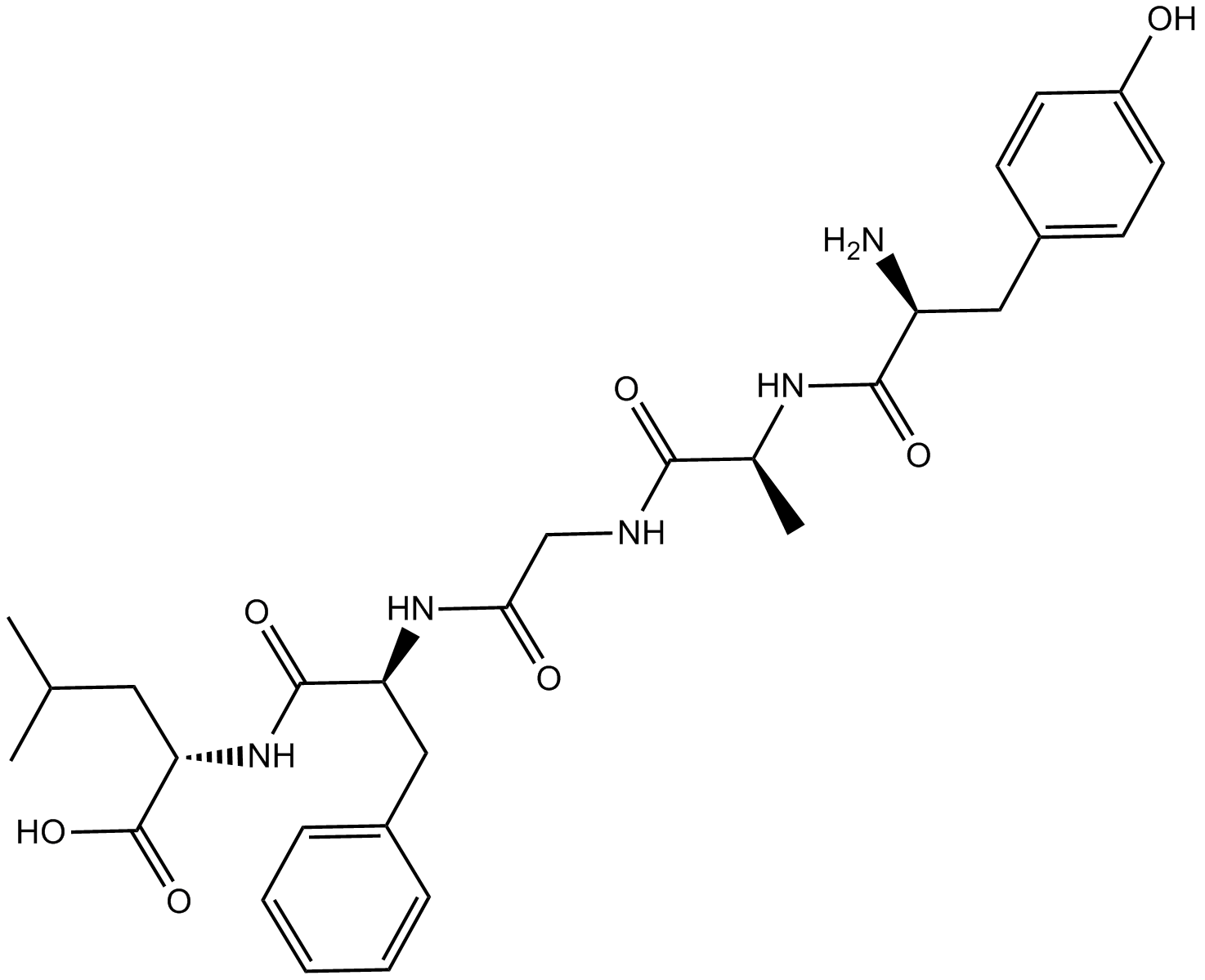
-
GC10803
DAMGO
μ opioid receptor agonist
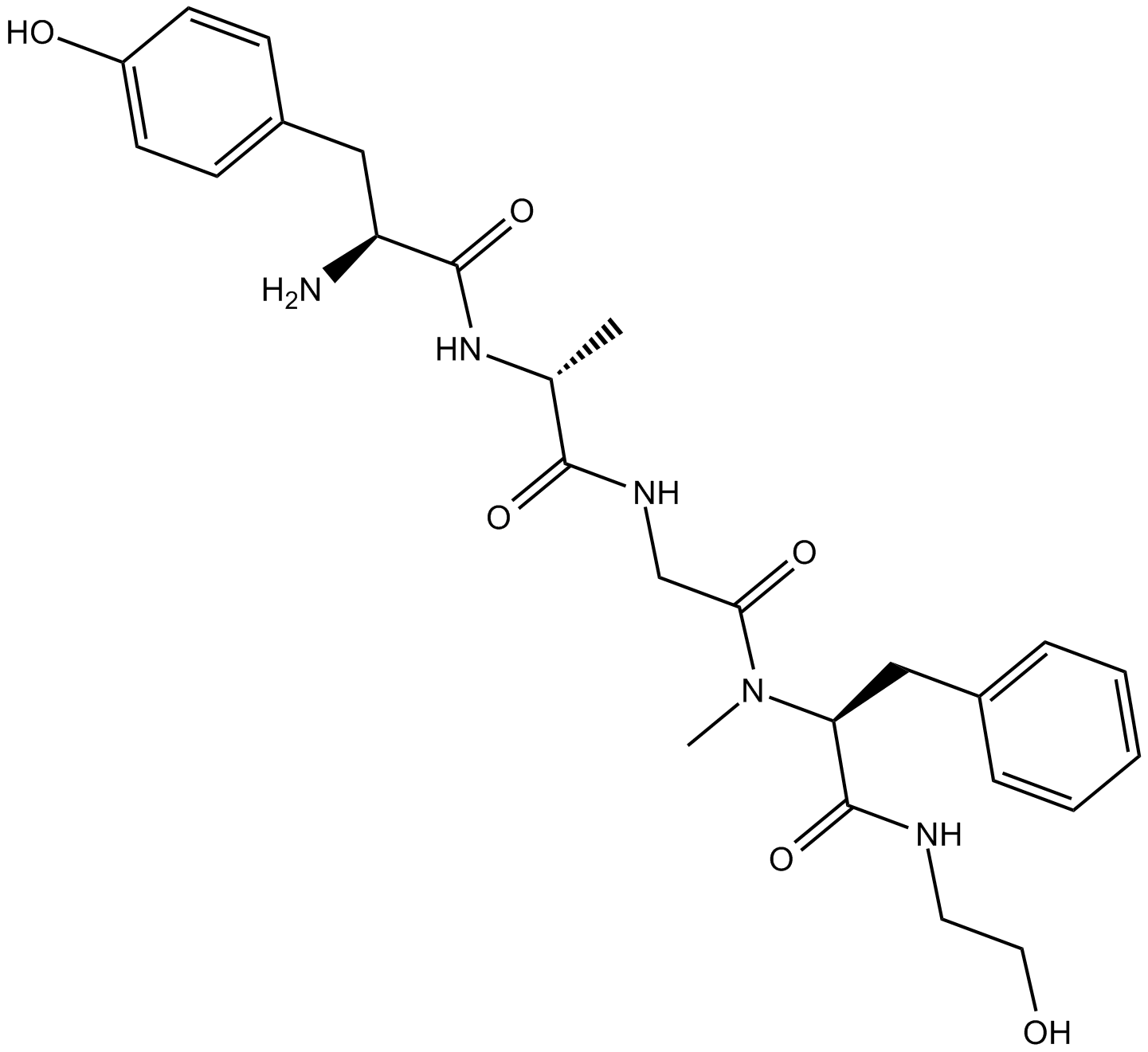
-
GC35805
DAMGO (TFA)
DAMGO (TFA) is a μ-opioid receptor (μ-OPR ) selective agonist with a Kd of 3.46 nM for native μ-OPR.
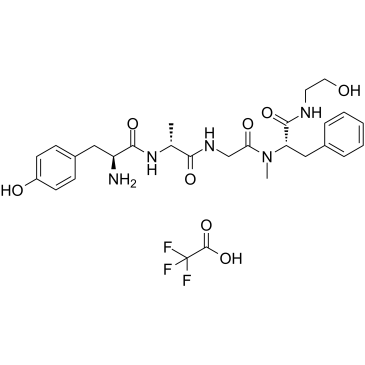
-
GC61954
Deltorphin 2 TFA
Deltorphin 2 TFA is a selective peptide agonist for the δ opioid receptor.
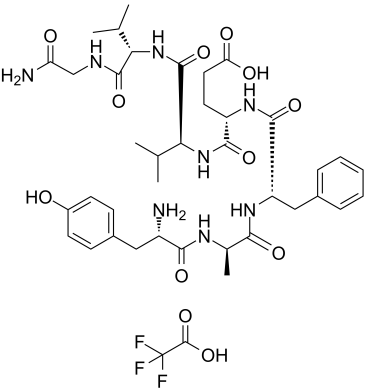
-
GC12143
Deltorphin I
δ-opioid receptor agonist

-
GC31168
Dermorphin
Dermorphin is a natural heptapeptide μ-opioid receptor (MOR) agonist found in amphibian skin.
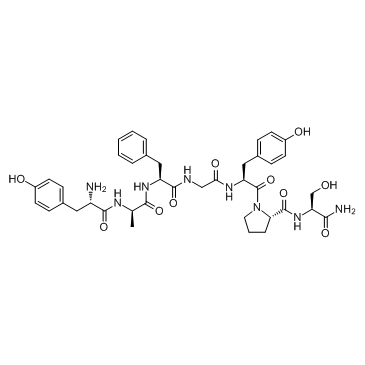
-
GC34223
Dermorphin Analog
Dermorphin Analog is an analog of Dermorphin.
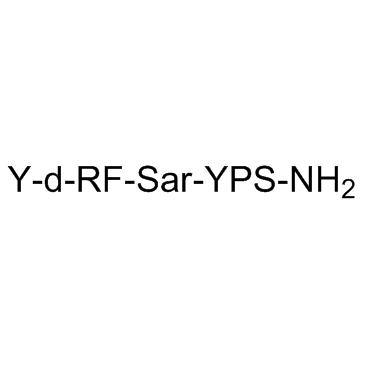
-
GC17553
DIPPA hydrochloride
κ receptor antagonist
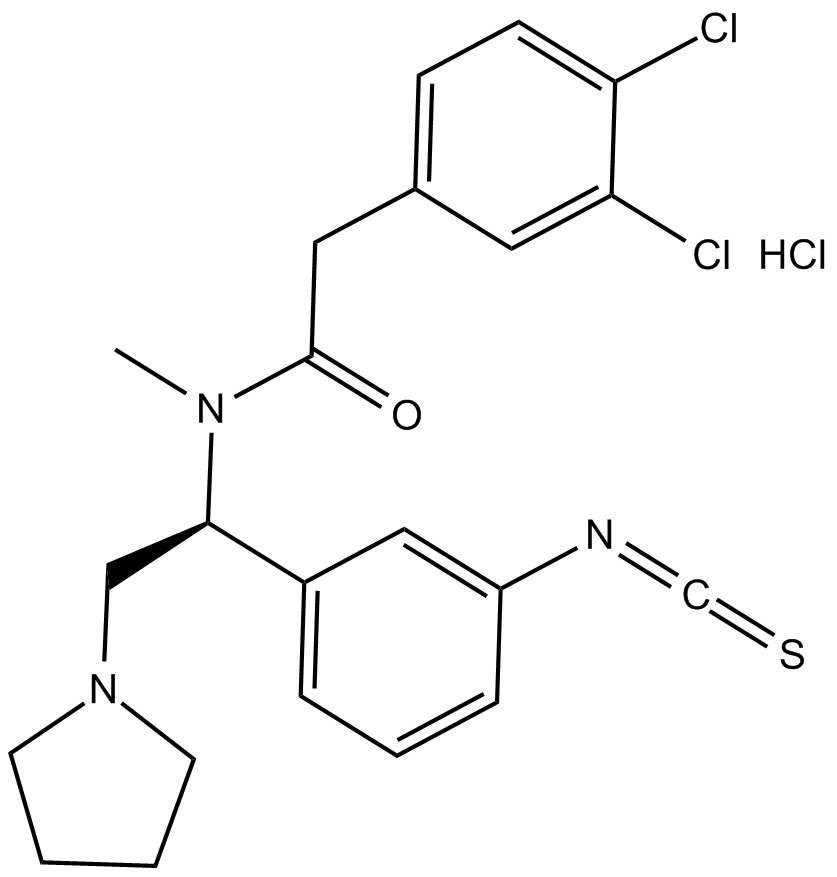
-
GC10333
DPDPE
Prototypical selective δ-opioid receptor agonist peptide
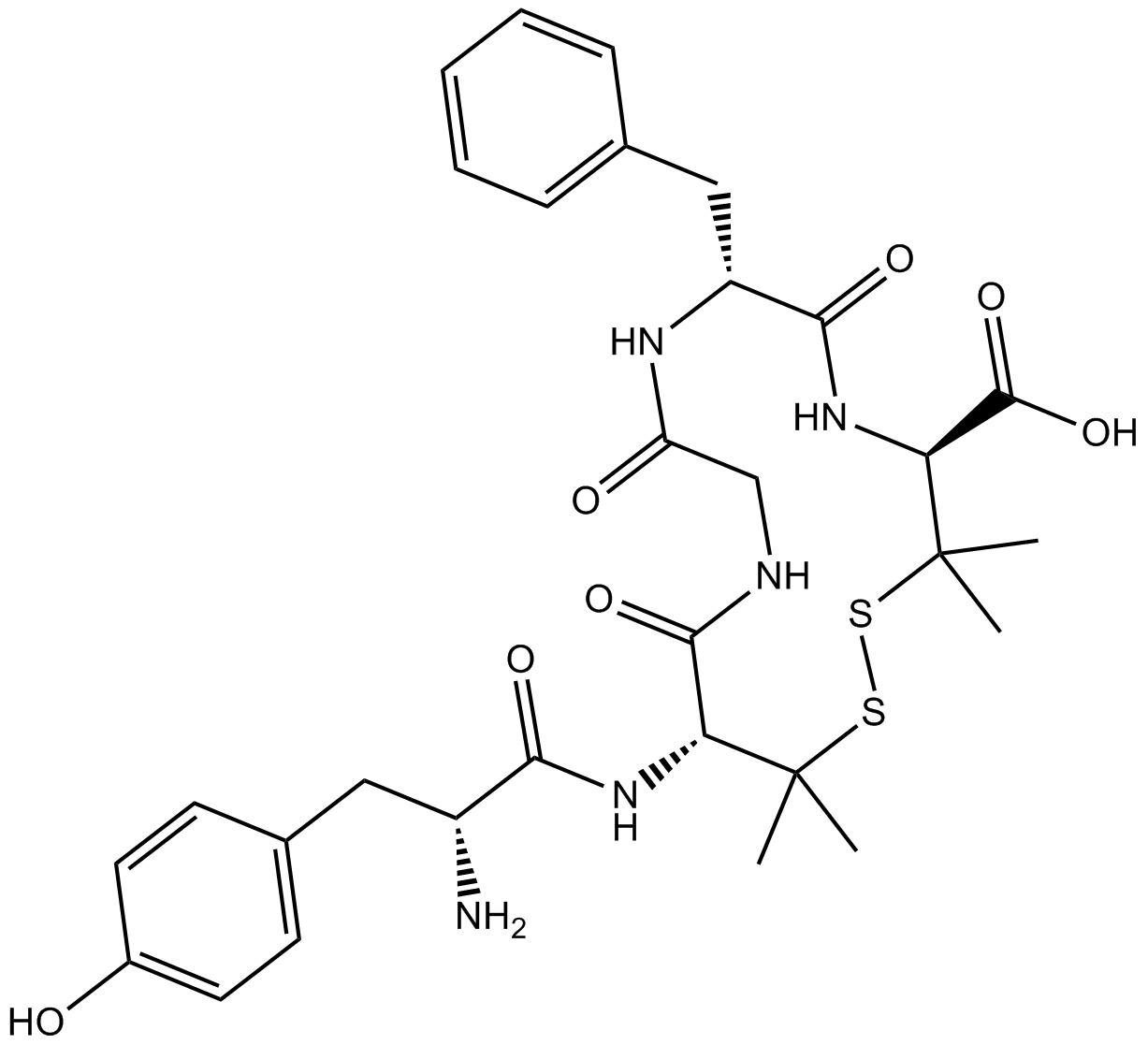
-
GC63431
DPDPE TFA
DPDPE TFA, an opioid peptide, is a selective δ-opioid receptor?(DOR) agonist?with anticonvulsant effects.
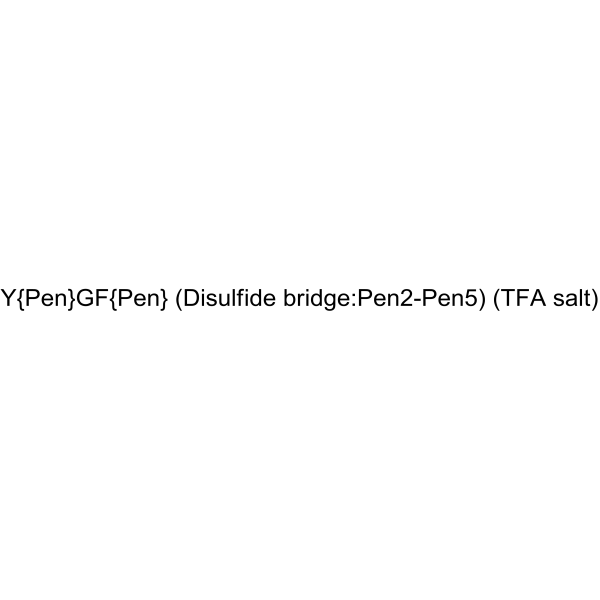
-
GC14774
DSLET
δ Opioid receptor agonist
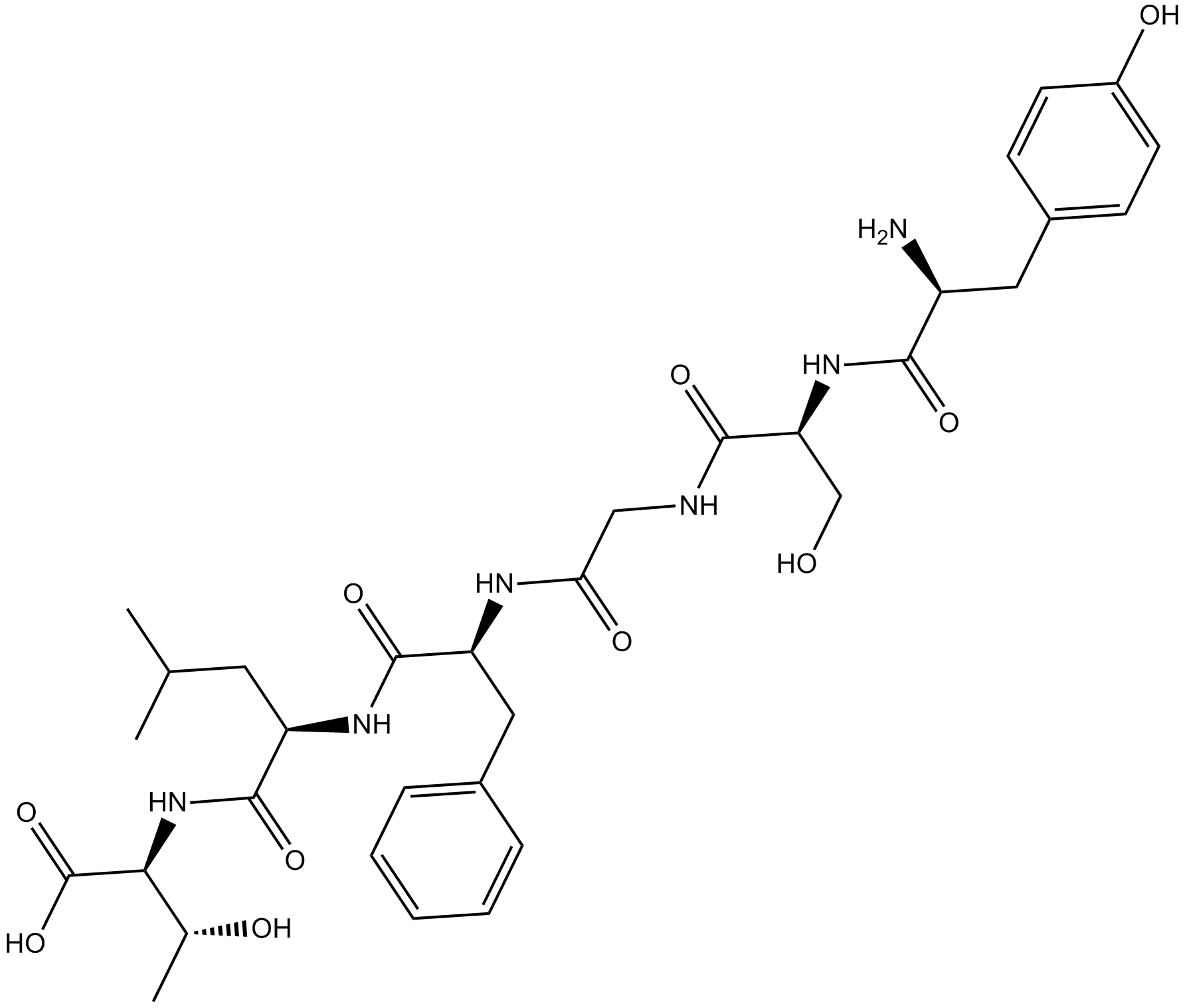
-
GC13546
Dynorphin A
Endogenous kappa receptor agonist
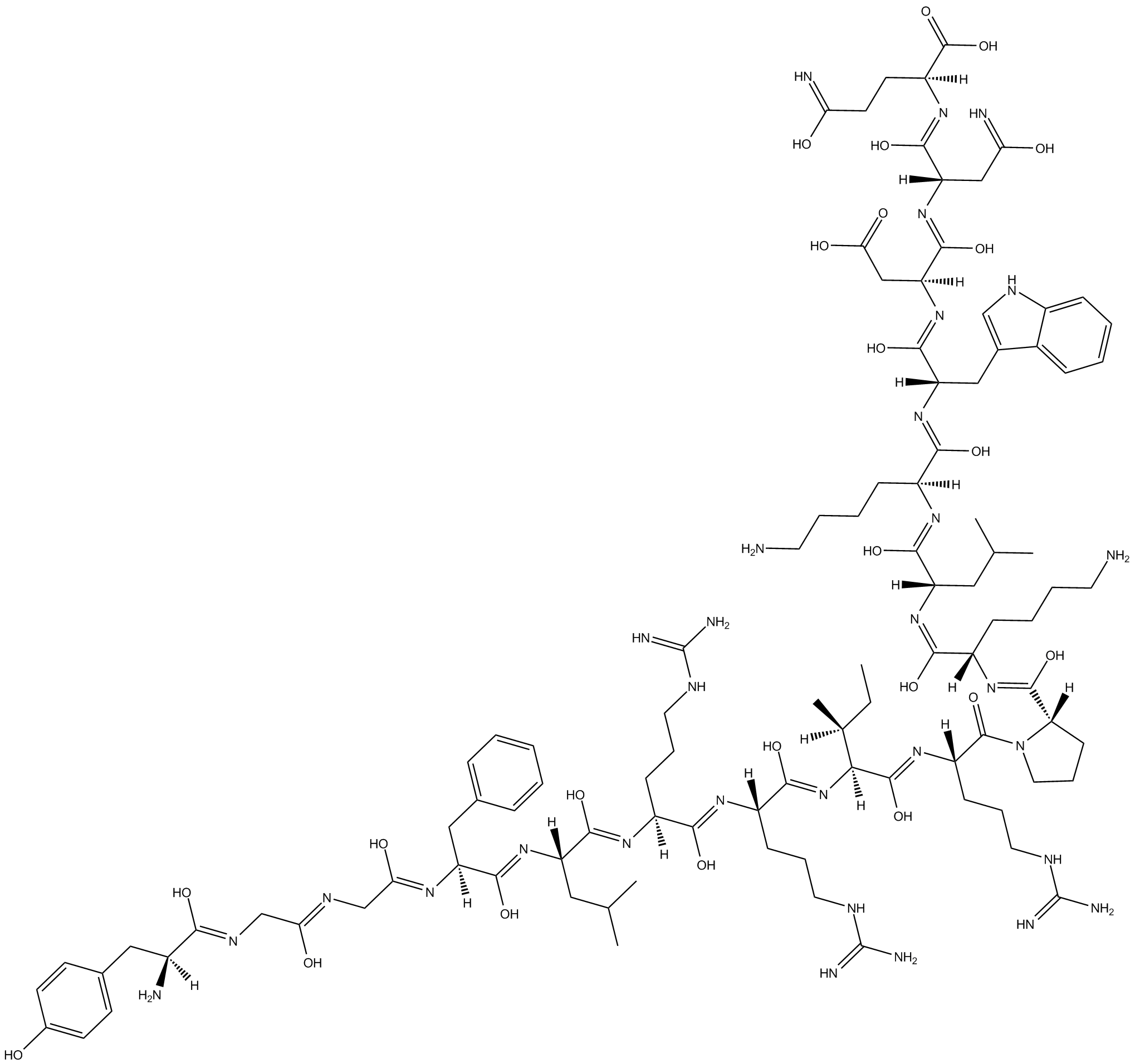
-
GC35917
Dynorphin A (1-10) TFA
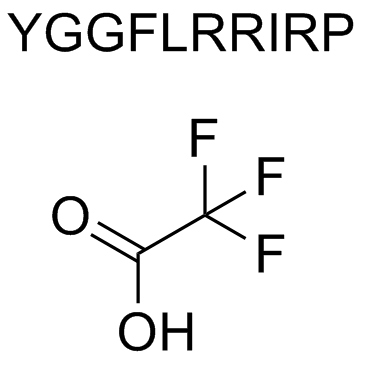
-
GA21407
Dynorphin A (1-8)
Dynorphin A (1-8) is the predominant opioid peptide identified in placental tissue extracts.
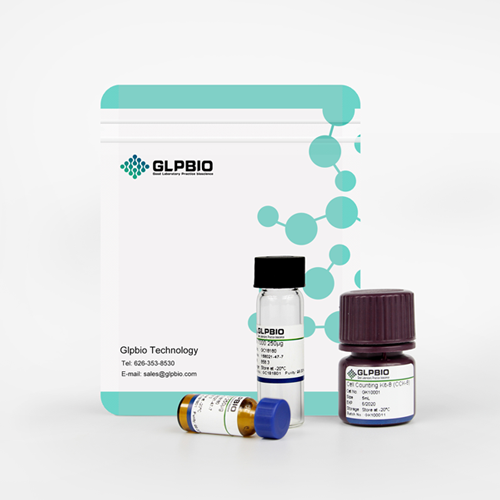
-
GC35918
Dynorphin A 1-10
Dynorphin A 1-10 an endogenous opioid neuropeptide, binds to extracellular loop 2 of the κ-opioid receptor.

-
GC15078
Dynorphin B
endogenous agonist for the kappa opioid receptor
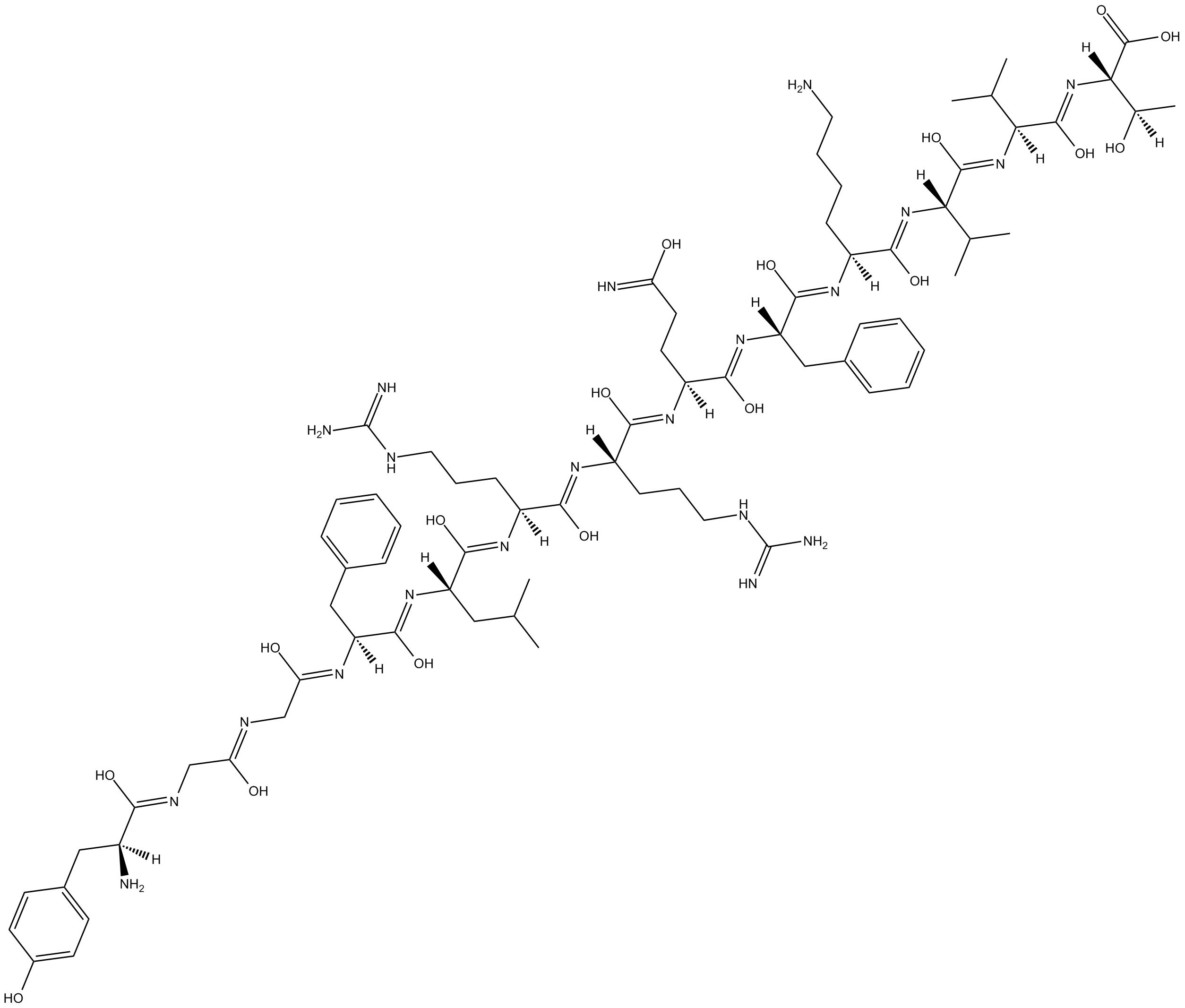
-
GC35919
Dynorphin B (1-13) (TFA)
Dynorphin B (1-13) TFA acts as an agonist on opioid κ-receptor.

-
GC67956
Endomorphin 1 acetate

-
GC35986
Endomorphin 2 TFA
Endomorphin 2 TFA, a high affinity, highly selective agonist of the μ-opioid receptor, displays reasonable affinities for kappa3 binding sites, with Ki value between 20 and 30 nM.
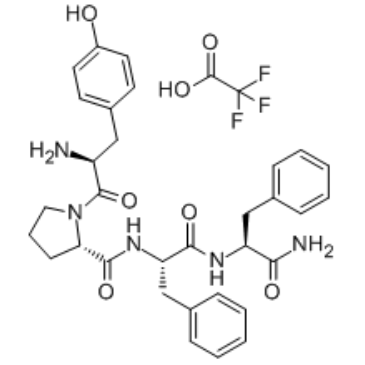
-
GP10065
Endomorphin-1

-
GC10059
Endomorphin-2
μ-opioid receptors agonist
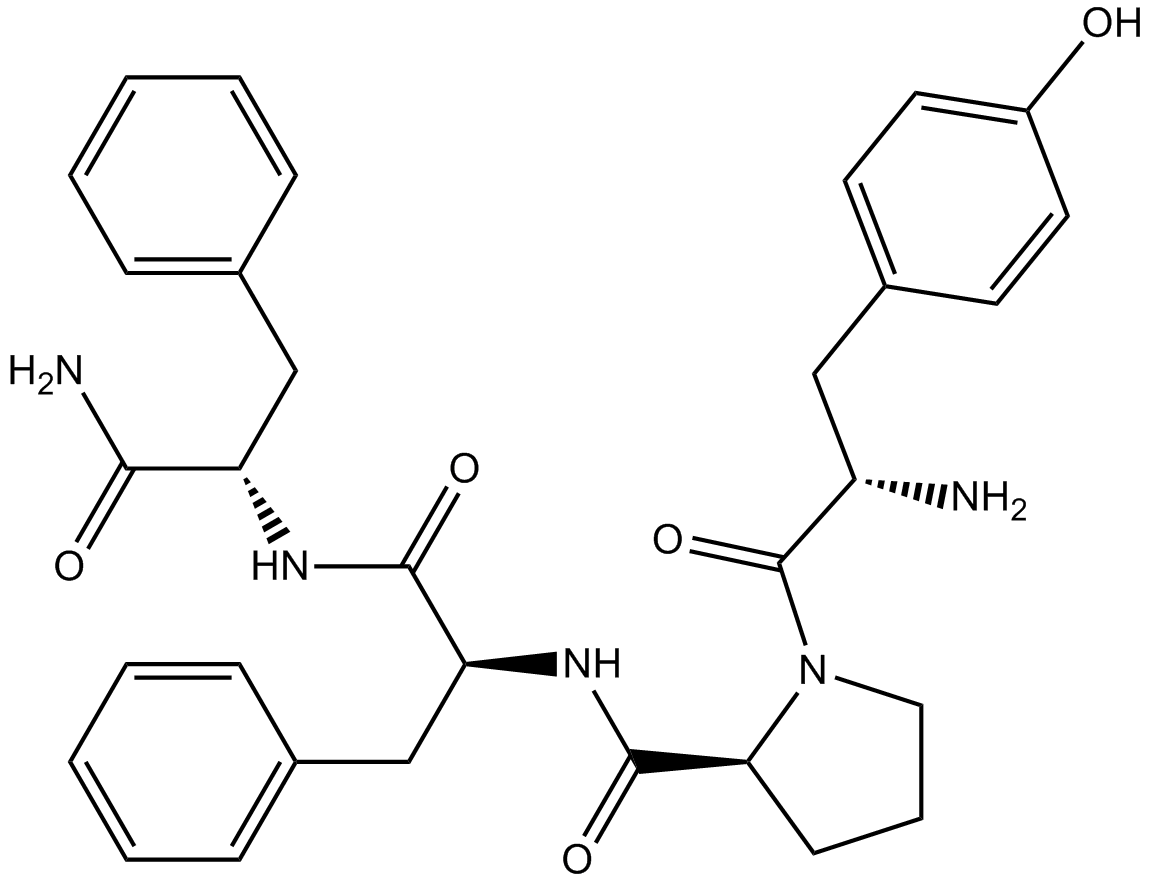
-
GC15874
FIT
δ-opioid agonist, irreversible
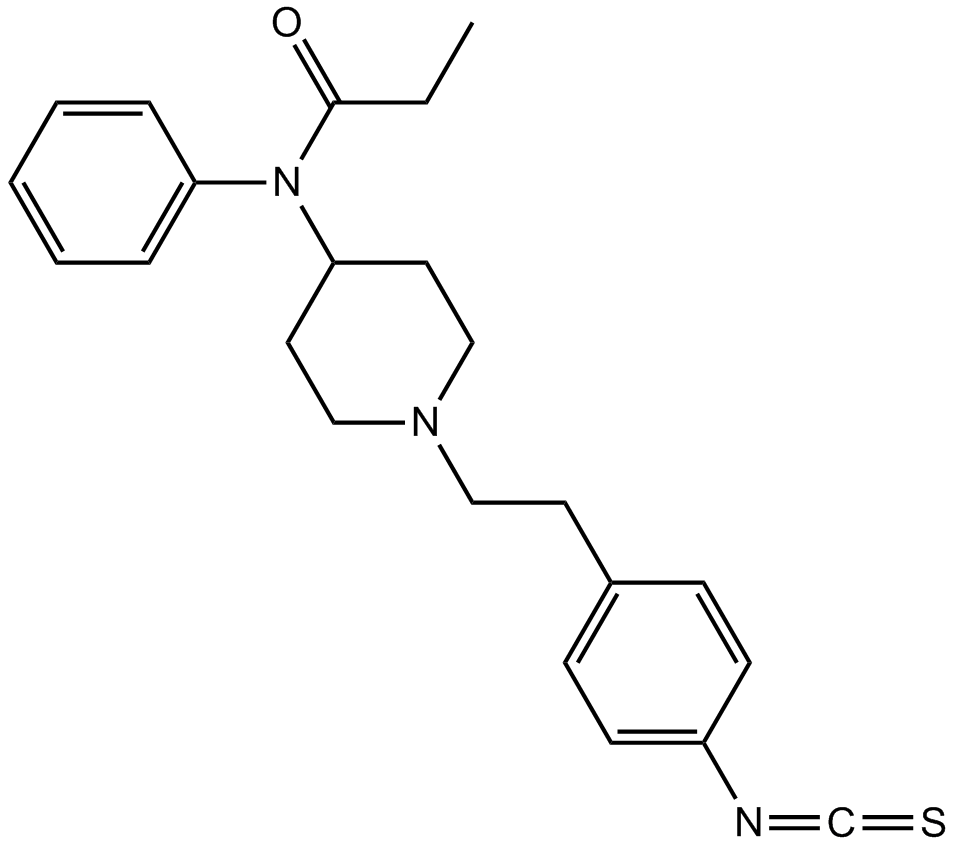
-
GC60857
Frakefamide TFA
Frakefamide TFA is a potent analgesic that acts as a peripheral active μ-selective receptor agonist.
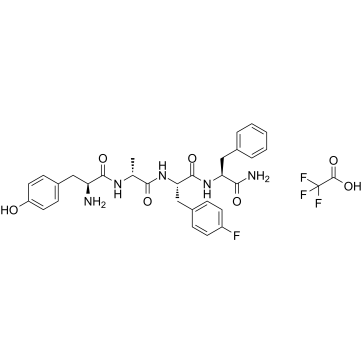
-
GC30328
Gluten Exorphin C
Gluten exorphin C is an opioid peptide derived from wheat gluten.

-
GC15843
GNTI dihydrochloride
κ opioid receptor antagonist
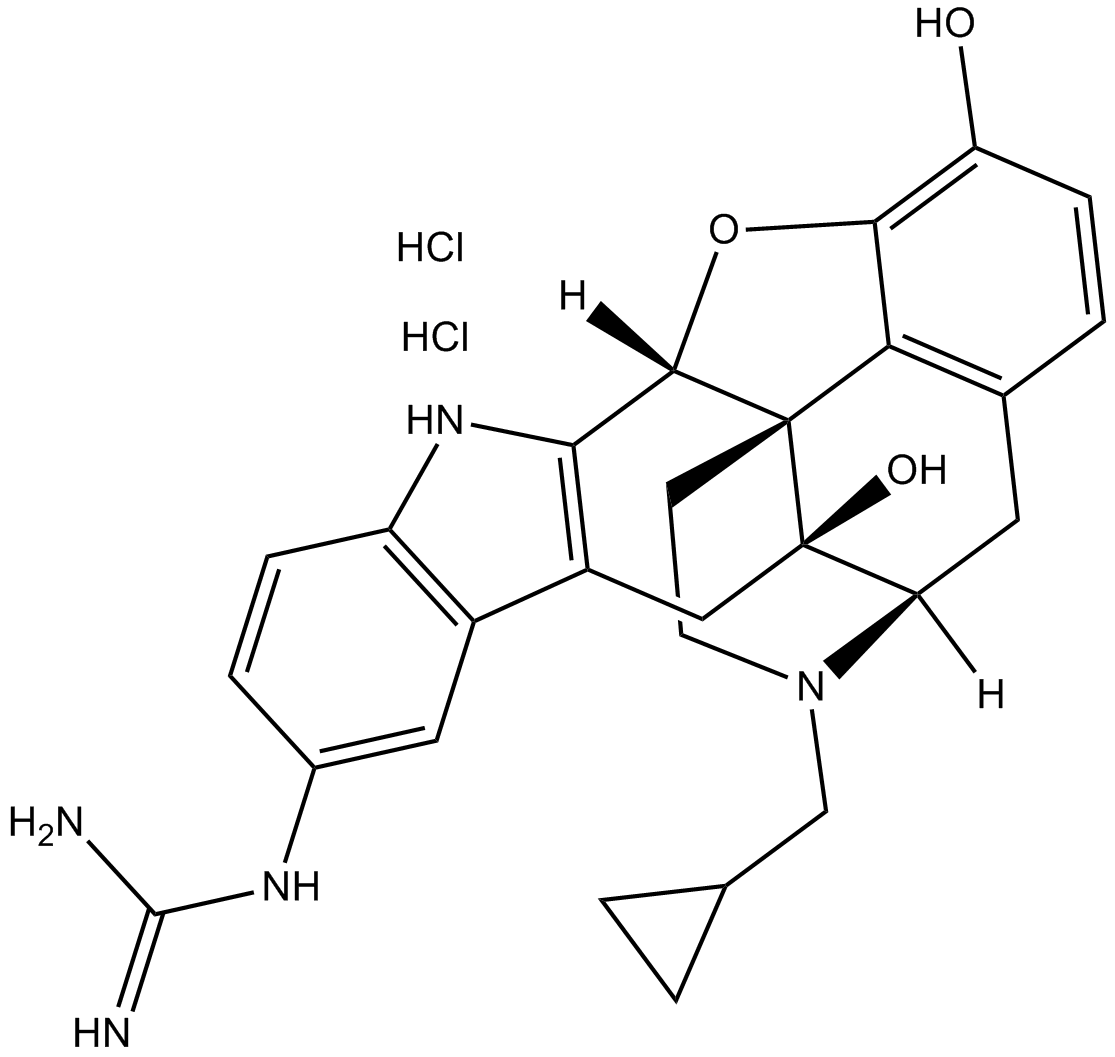
-
GC14739
GR 89696 fumarate
κ-opioid agonist
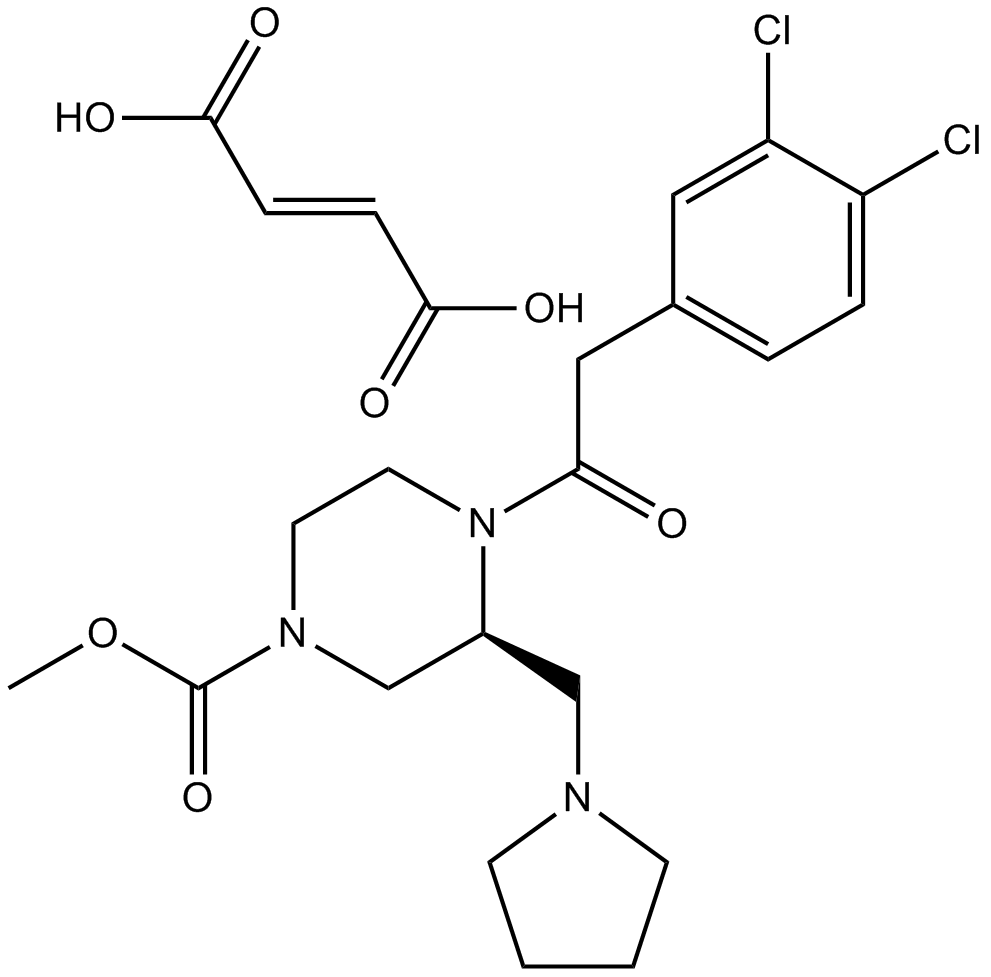
-
GC68427
GSK1521498 free base
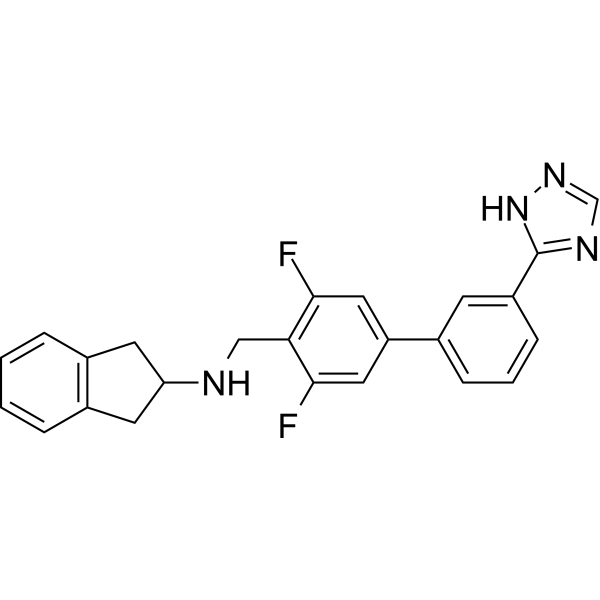
-
GA22290
H-D-Phe-Cys-Tyr-D-Trp-Arg-Thr-Pen-Thr-NH₂
CTAP, an analog of CTOP, is a selective µ-opioid receptor antagonist.

-
GC43808
Hecogenin Acetate
Hecogenin acetate is a steroid sapogenin and an acetylated form of hecogenin that has anthelmintic and antinociceptive properties.

-
GC32489
Hemorphin-7
Hemorphin-7 is a hemorphin peptide, an endogenous opioid peptide derived from the β-chain of hemoglobin.
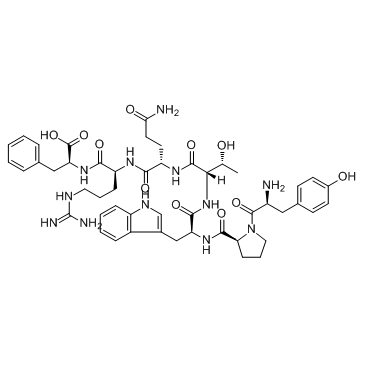
-
GC11639
ICI 154,129
Selective δ opioid antagonist
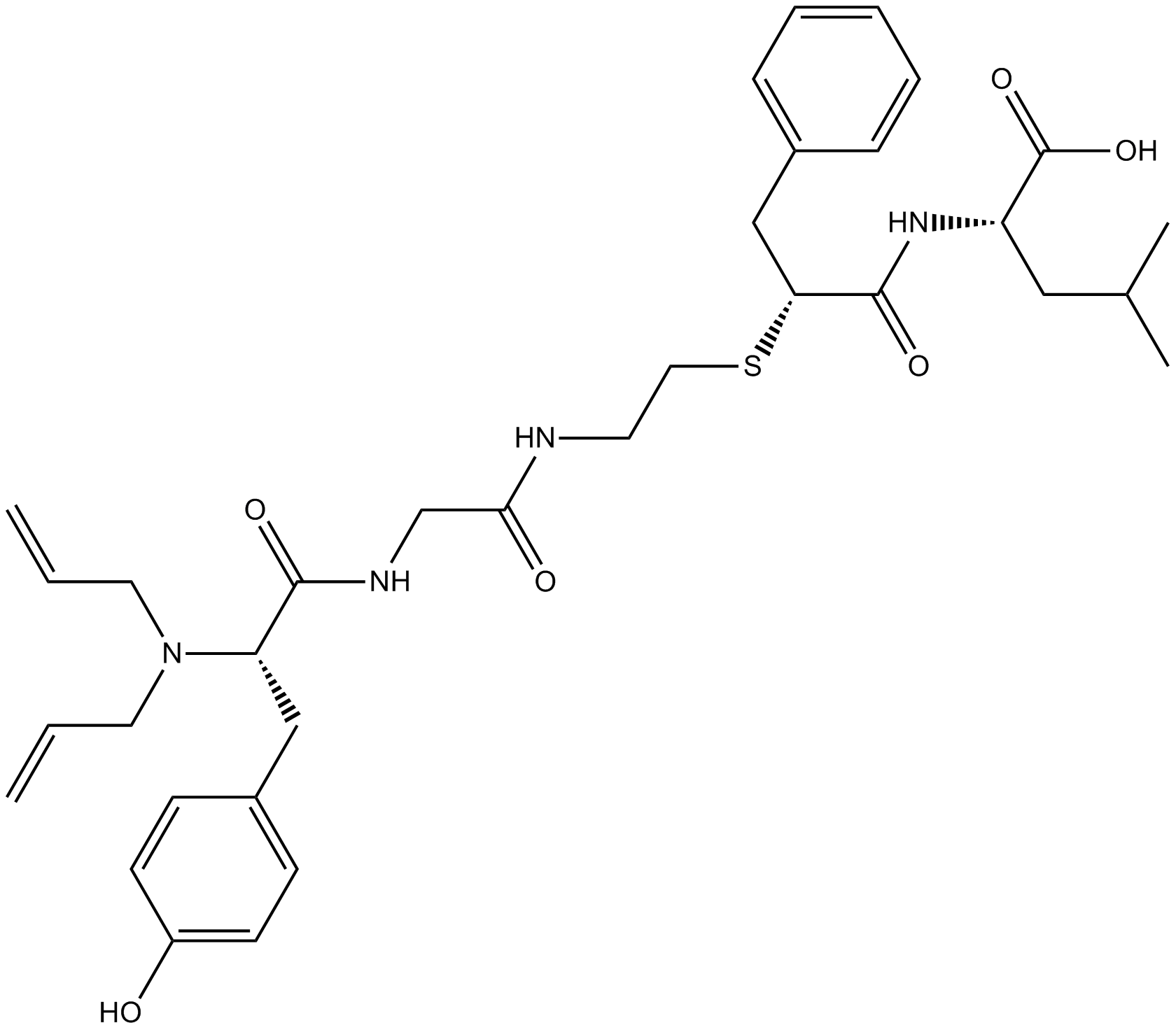
-
GC16193
ICI 174,864
Selective δ opioid antagonist
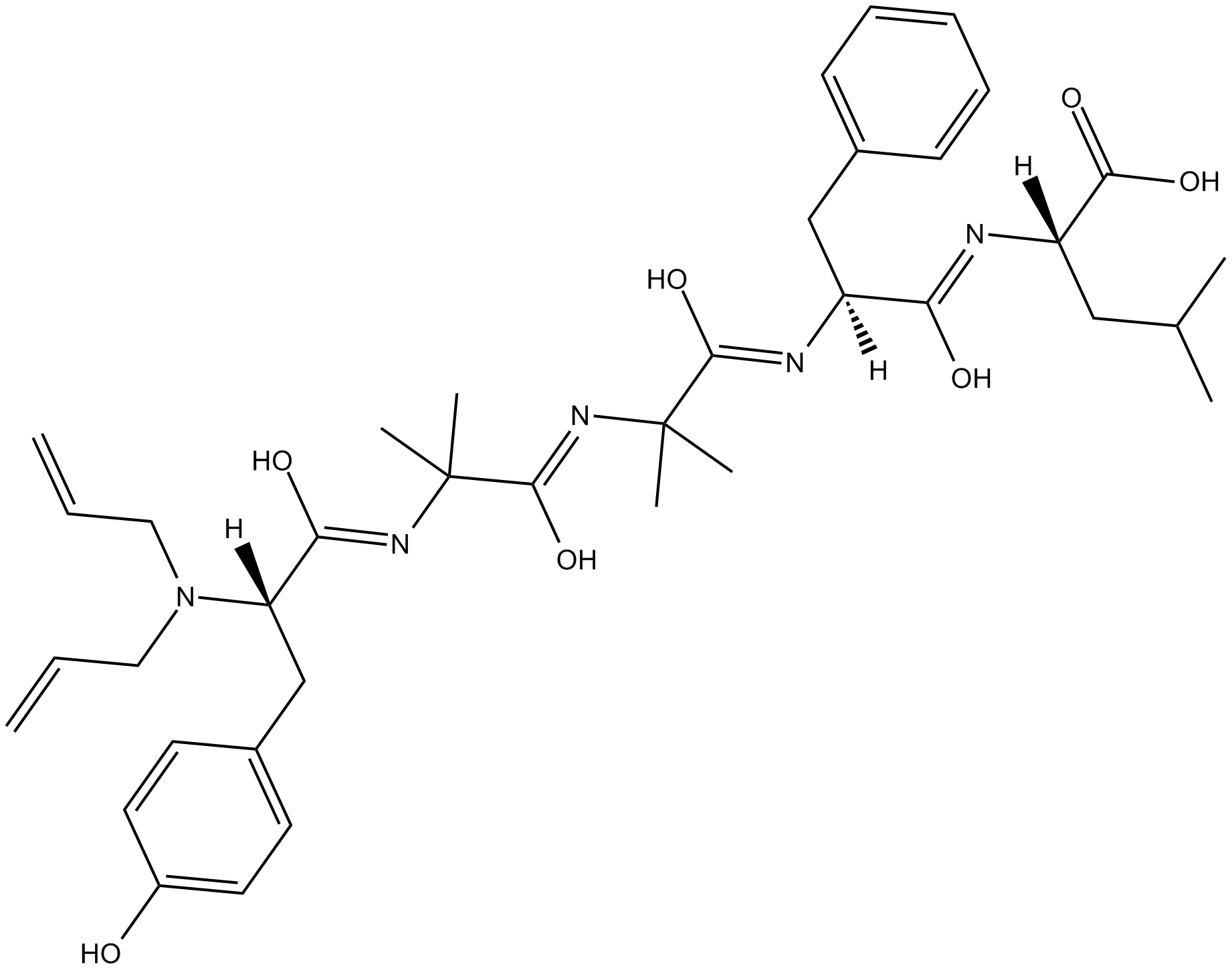
-
GC12534
ICI 199,441 hydrochloride
ICI 199,441 hydrochloride is a potent and selective κ-opioid receptor agonist.
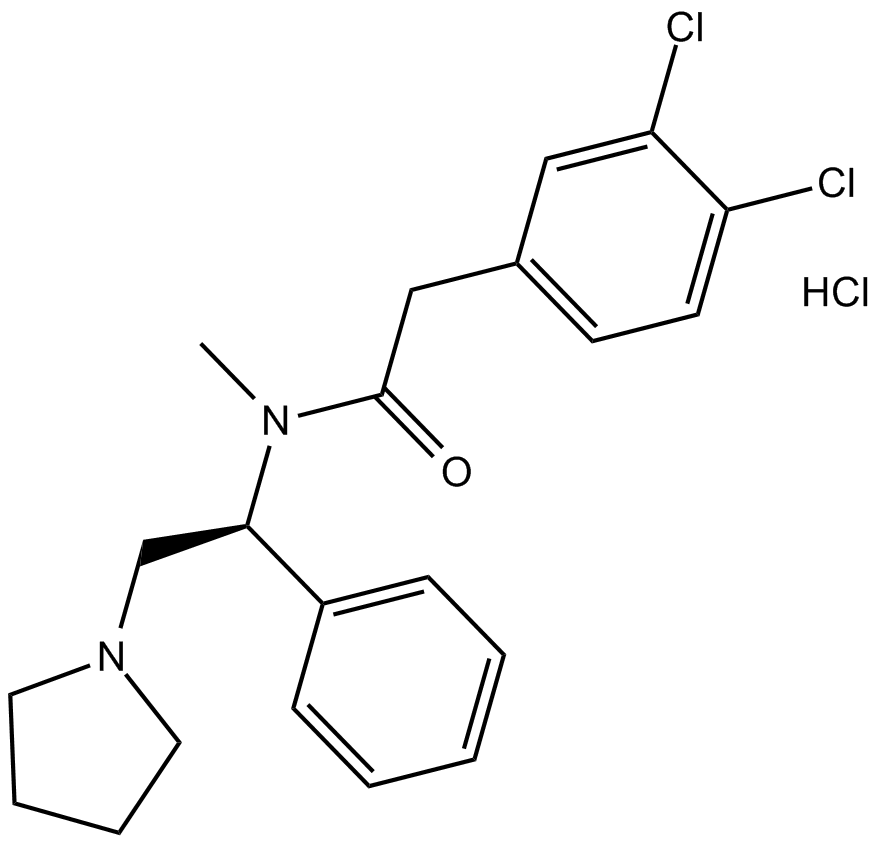
-
GC13097
ICI 204,448 hydrochloride
κ opioid receptor agonist
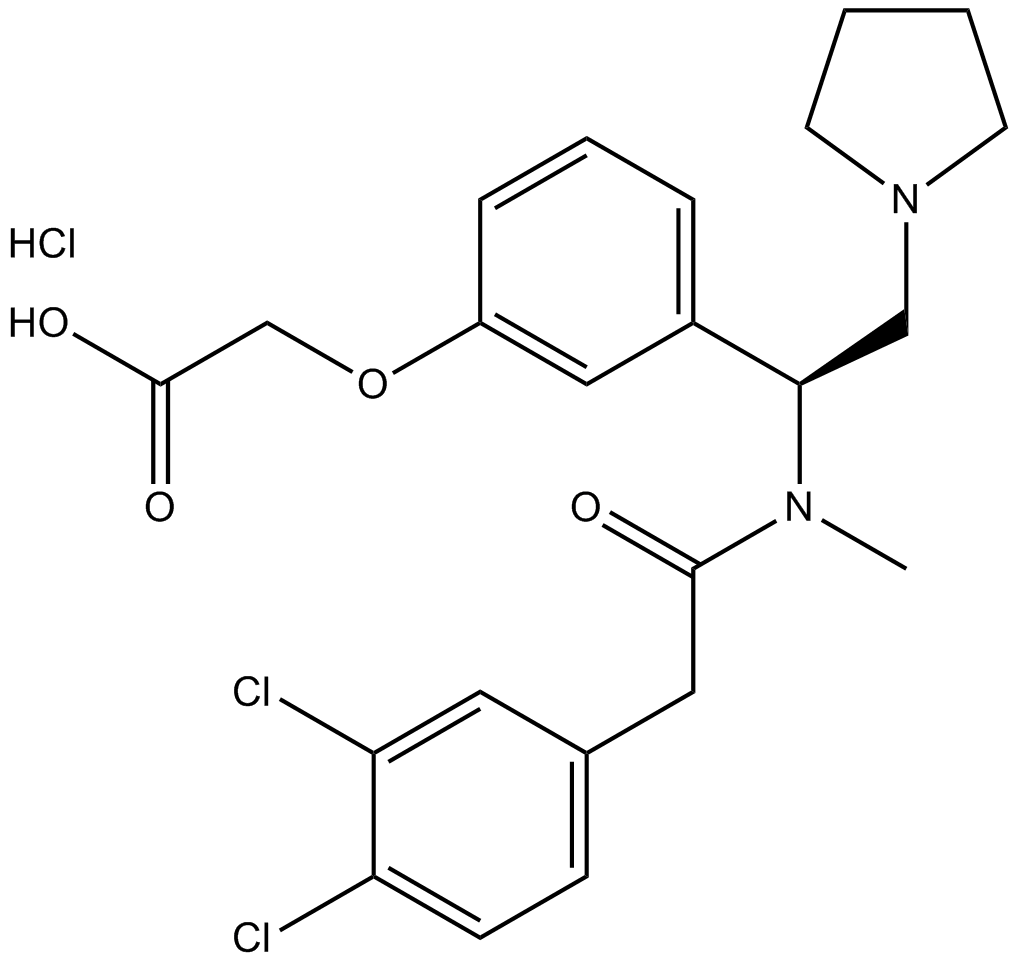
-
GC17939
JDTic

-
GC17624
JDTic 2HCl
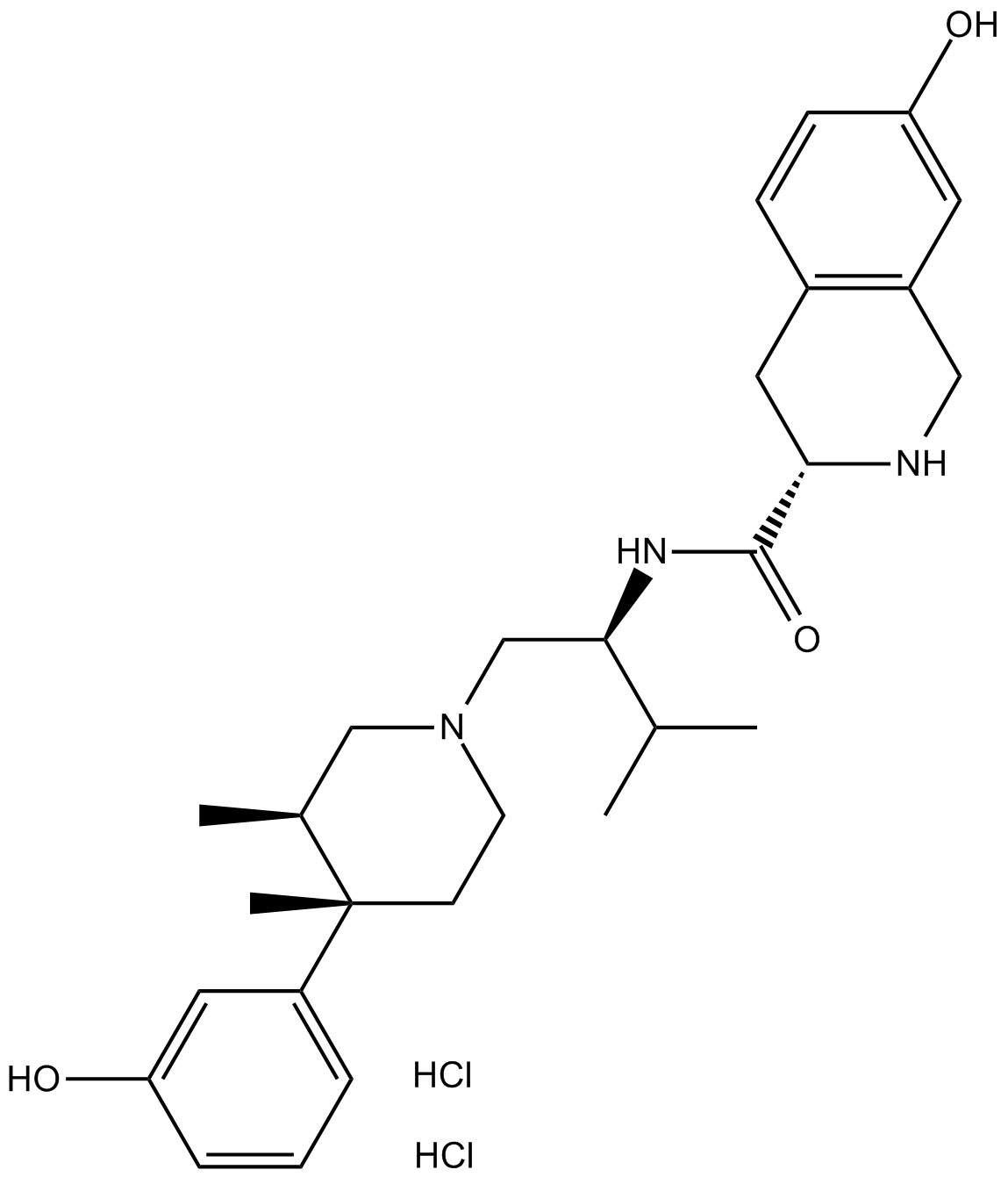
-
GC11826
JTC-801
KOR-3 (NOP) receptor antagonist
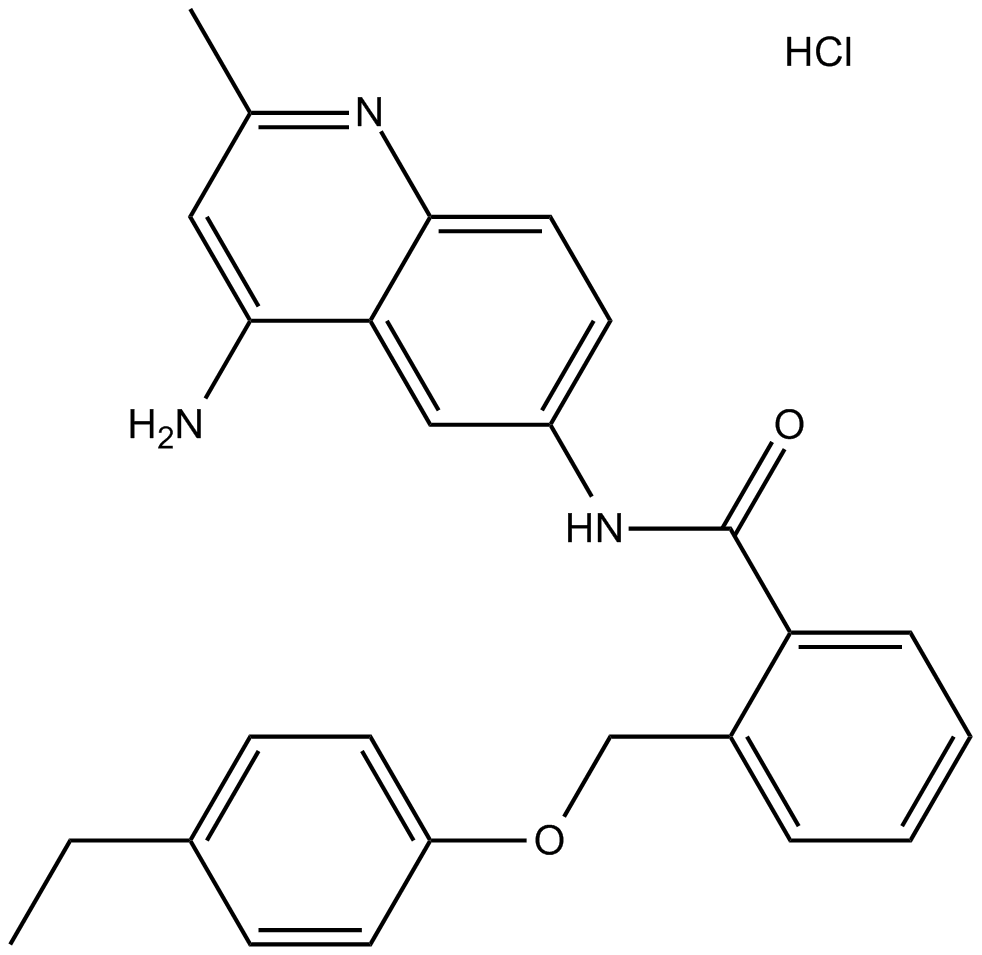
-
GC31151
Kelatorphan
Kelatorphan is a full inhibitor of enkephalin degrading enzymes.
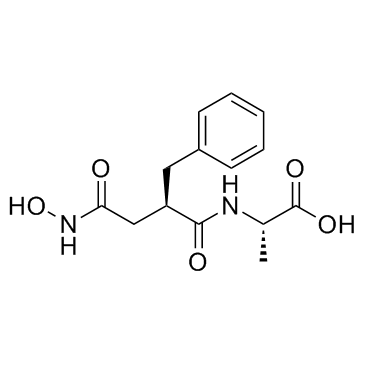
-
GC61003
Loperamide D6 hydrochloride
Loperamide D6 hydrochloride (R-18553 D6 hydrochloride) is a deuterium labeled Loperamide hydrochloride.
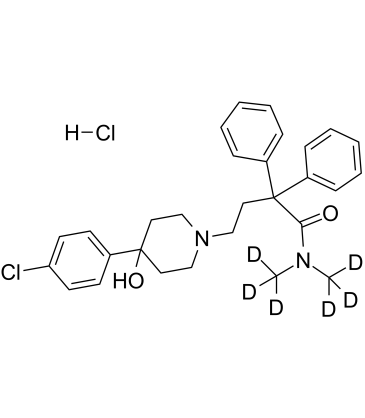
-
GC36479
Loperamide hydrochloride
Loperamide (hydrochloride) (R-18553 (hydrochloride)) is an opioid receptor agonist.
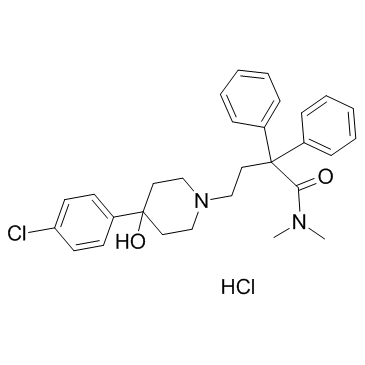
-
GC36508
LY-2940094
LY-2940094 (BTRX-246040) is a potent, selective and orally available nociceptin receptor (NOP receptor) antagonist with high affinity (Ki=0.105 nM) and antagonist potency (Kb=0.166 nM).
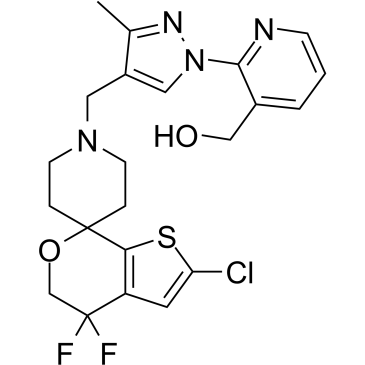
-
GC39193
LY2444296
LY2444296 is an orally bioavailable, high-affinity and selective short-acting kappa opioid receptor (KOPR) antagonist, with a Ki value of ?1 nM.
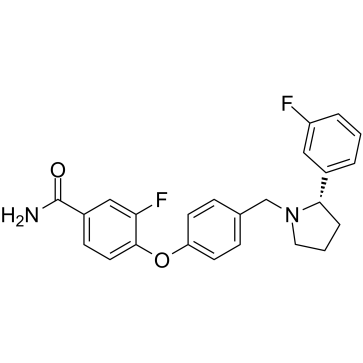
-
GC19500
LY2795050
LY2795050 is a novel selective κ-opioid Receptor (KOR) antagonist
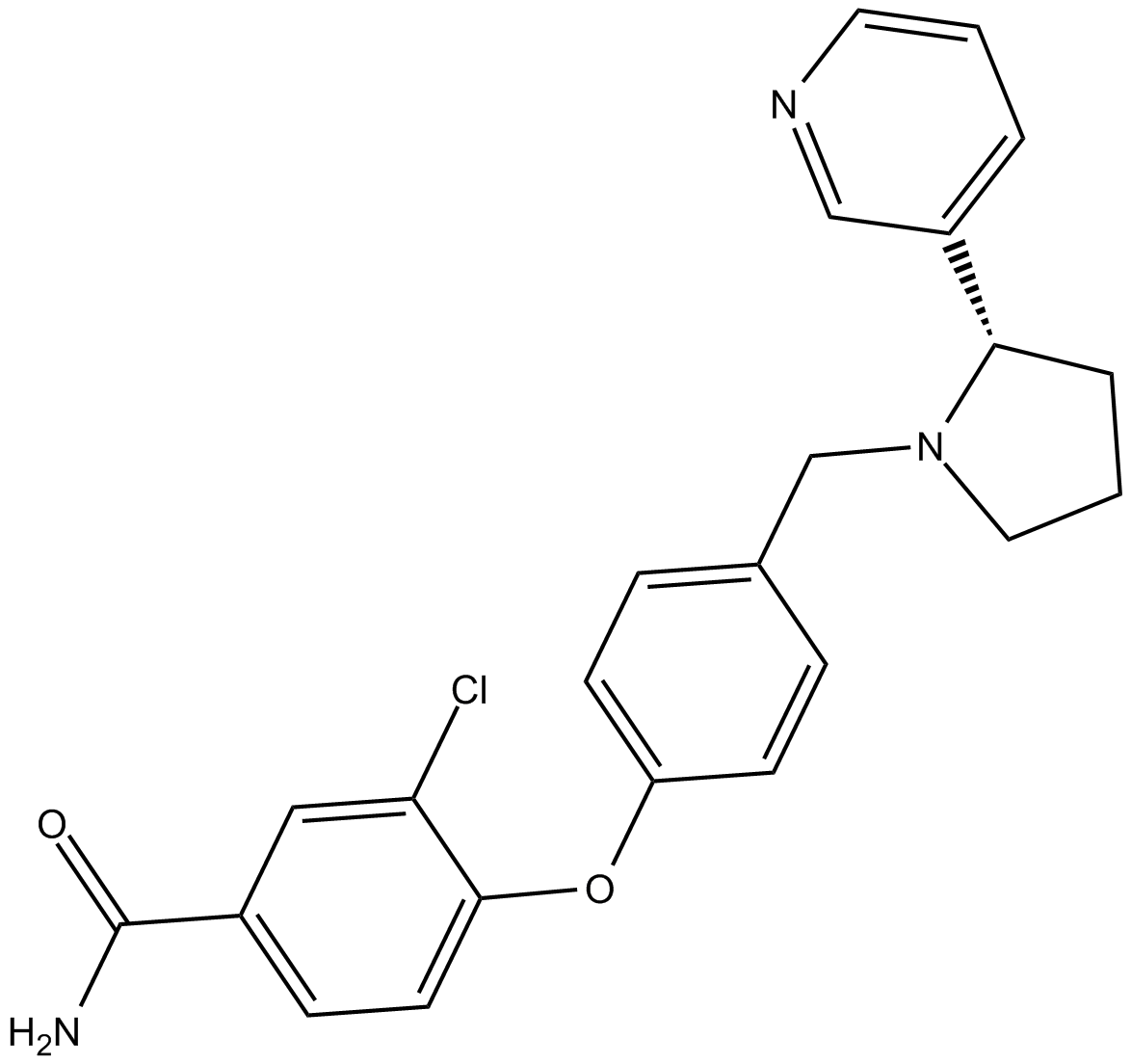
-
GC17874
Matrine
An alkaloid with diverse biological activities
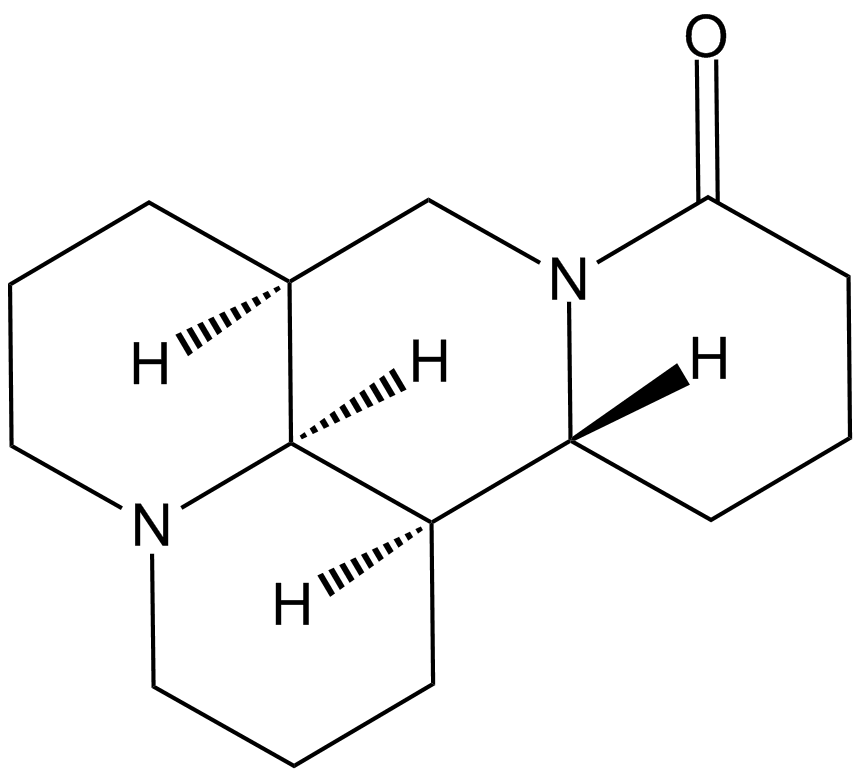
-
GC36562
MCOPPB triHydrochloride
MCOPPB 3Hcl is a nociceptin receptor agonist with pKi of 10.07; weaker activity at other opioid receptors.

-
GC11016
Meptazinol HCl
Partial agonist at the μ1 opioid receptor
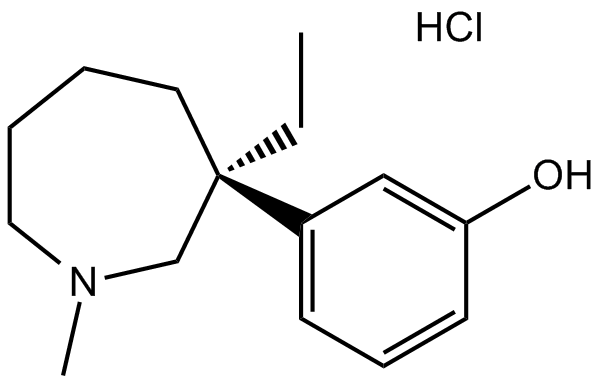
-
GC63072
Methyl-6-alpha-Naltrexol
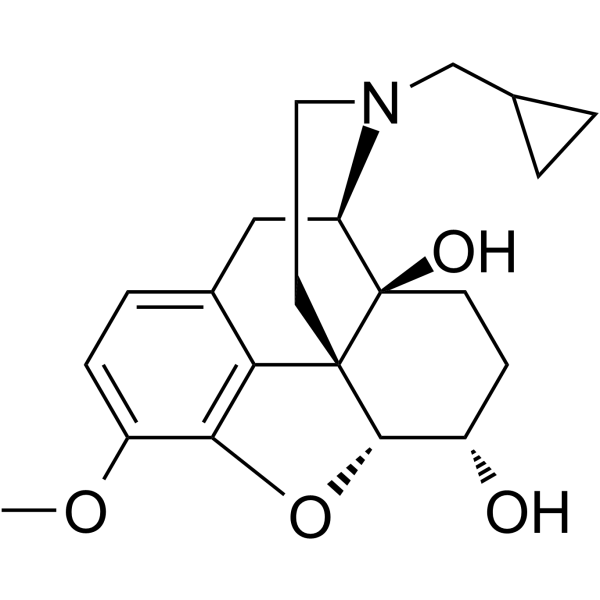
-
GC16177
Methylnaltrexone Bromide
Antagonist of peripherally acting μ-opioid
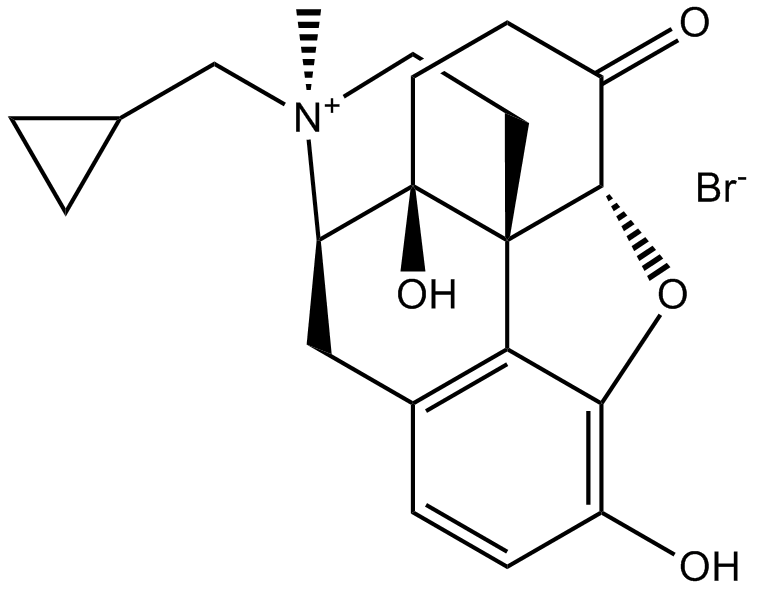
-
GC14525
ML 190
κ opioid receptor (KOP) antagonist
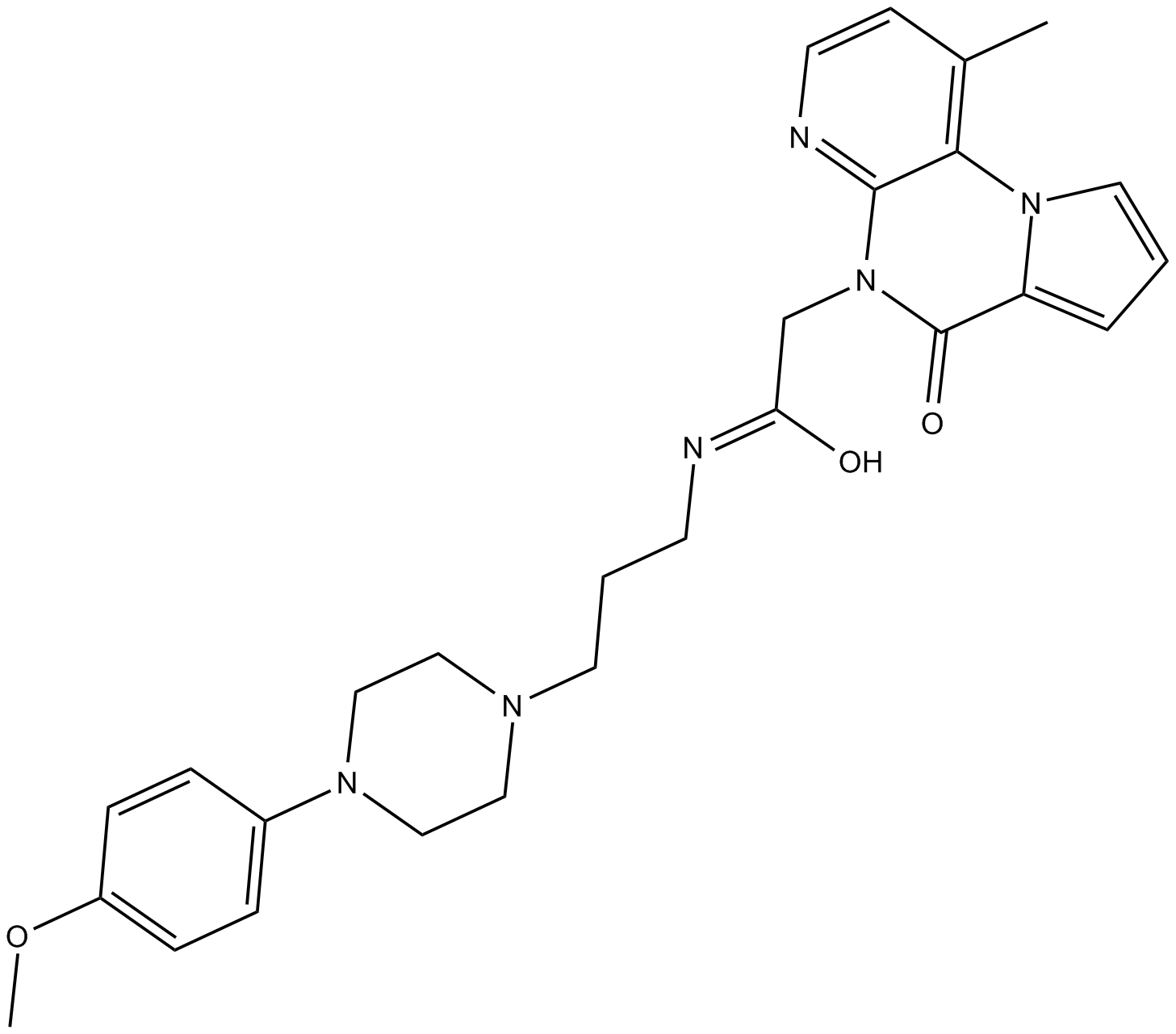
-
GC12663
N-Benzylnaltrindole hydrochloride
δ2 opioid receptor antagonist
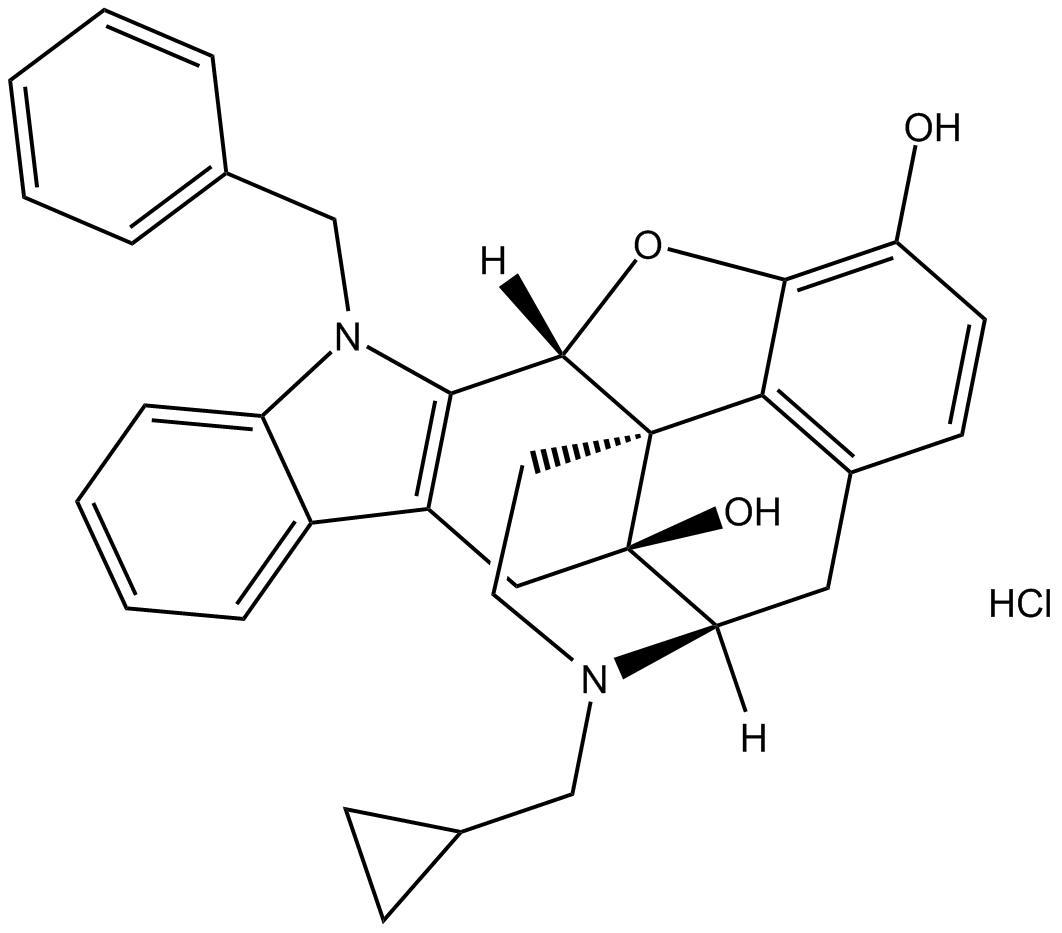
-
GC16553
N-Desmethylclozapine
5-HT2C serotonin receptor antagonist
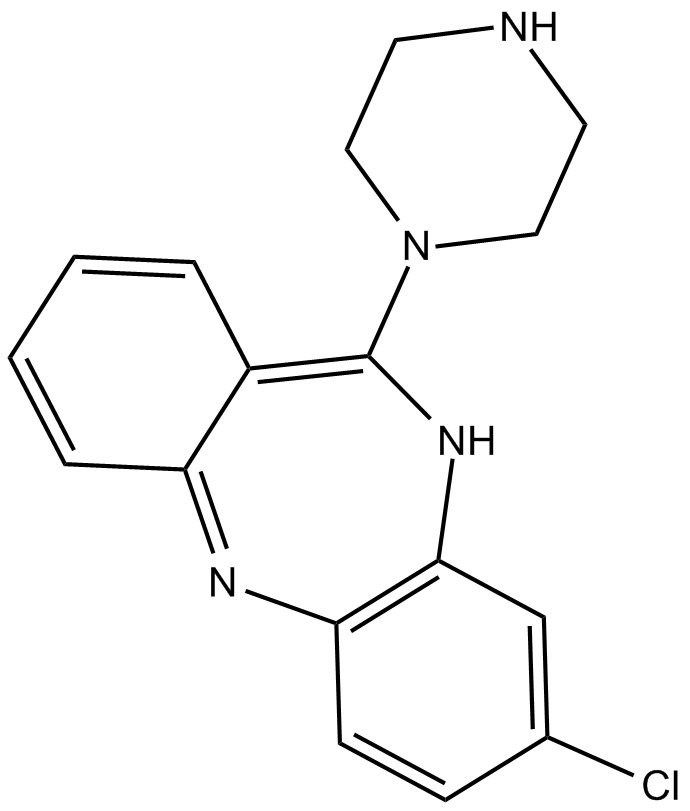
-
GC14979
N-MPPP Hydrochloride
High affinity κ agonist
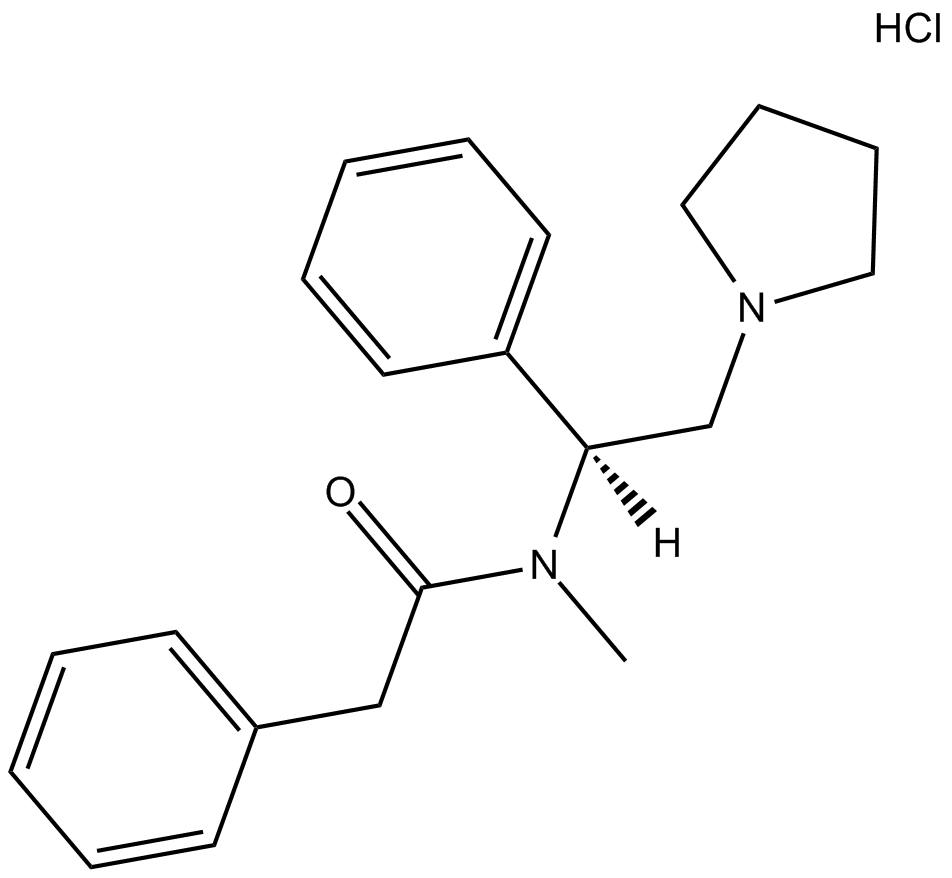
-
GC36778
N-terminally acetylated Leu-enkephalin
N-terminally acetylated Leu-enkephalin is the N-terminally acetylated form of Leu-enkephalin.
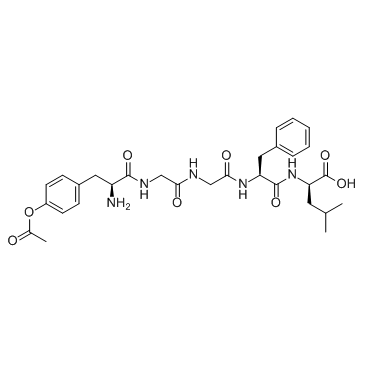
-
GC46182
Naldemedine
A peripherally acting opioid receptor antagonist

-
GC44312
Nalfurafine
Nalfurafine is a κ-opioid receptor (KOR) agonist (EC50 = 0.05 nM for human receptors expressed in CHO cell membranes).

-
GC30932
Naloxegol (NKTR-118)
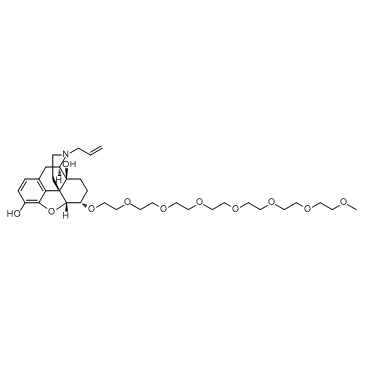
-
GC30881
Naloxegol oxalate (NKTR-118 oxalate)
A peripherally acting antagonist of the µ-opioid receptor
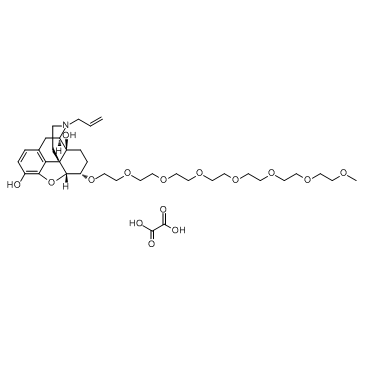
-
GC16588
Naloxonazine dihydrochloride
Naloxonazine dihydrochloride is a specific μ-opioid receptor antagonist with an IC50 of 5.4 nM.
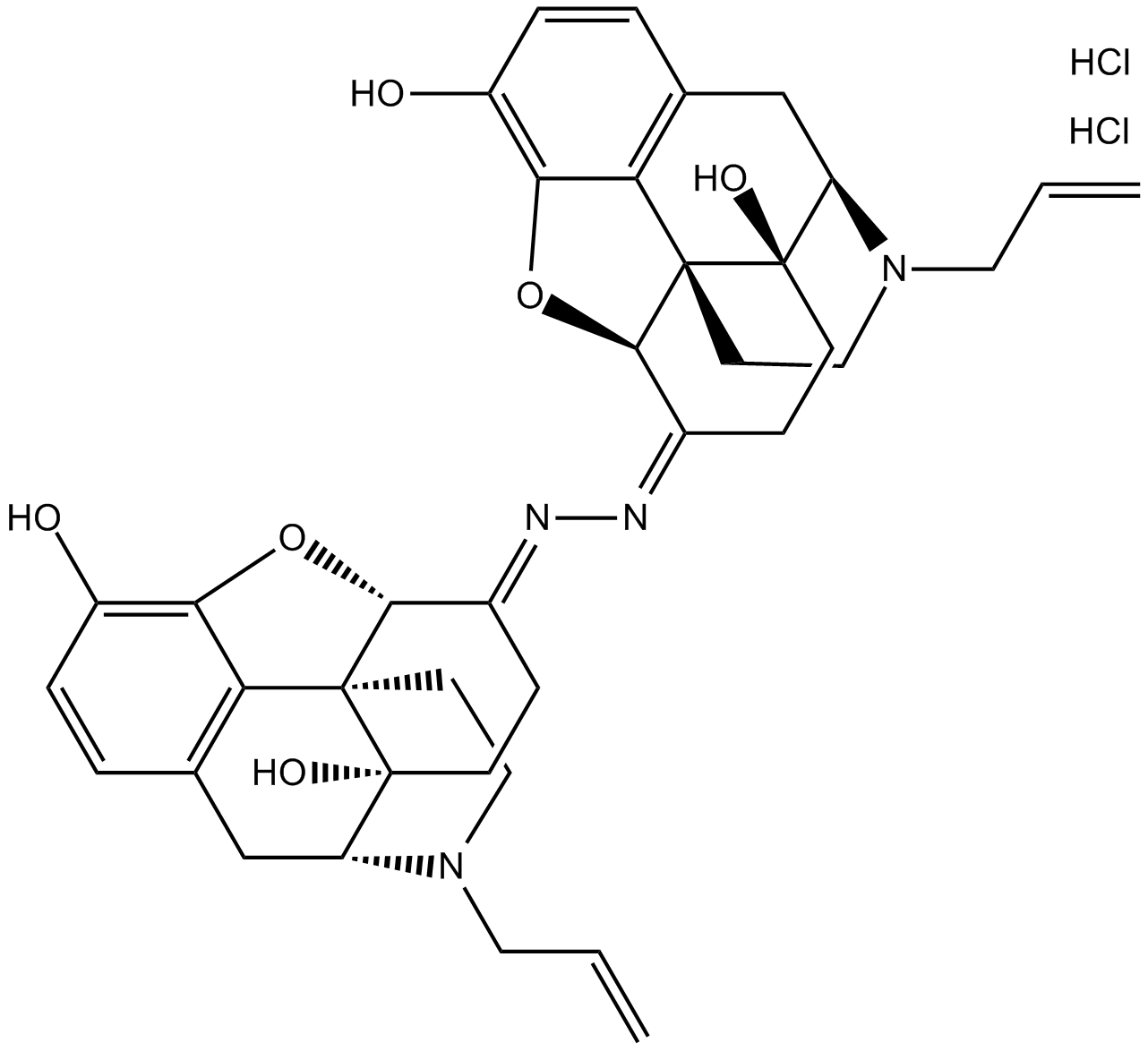
-
GC11807
Naloxone (hydrochloride)
An opioid inverse agonist drug
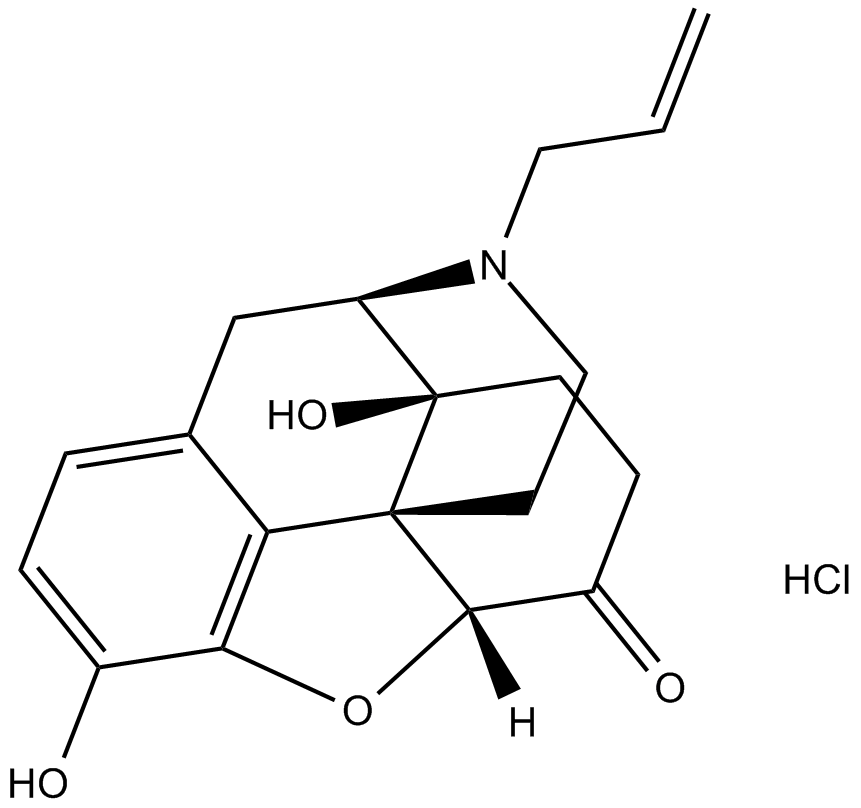
-
GC63686
Naloxone methiodide
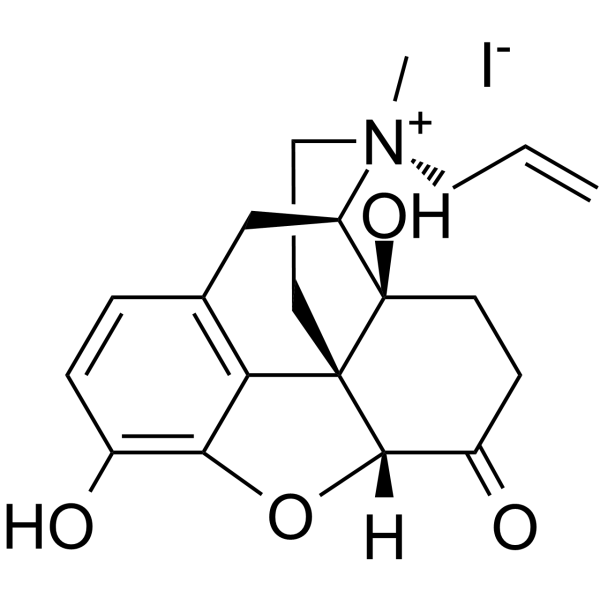
-
GC16206
Naltrexone
Opioid receptor antagonist
